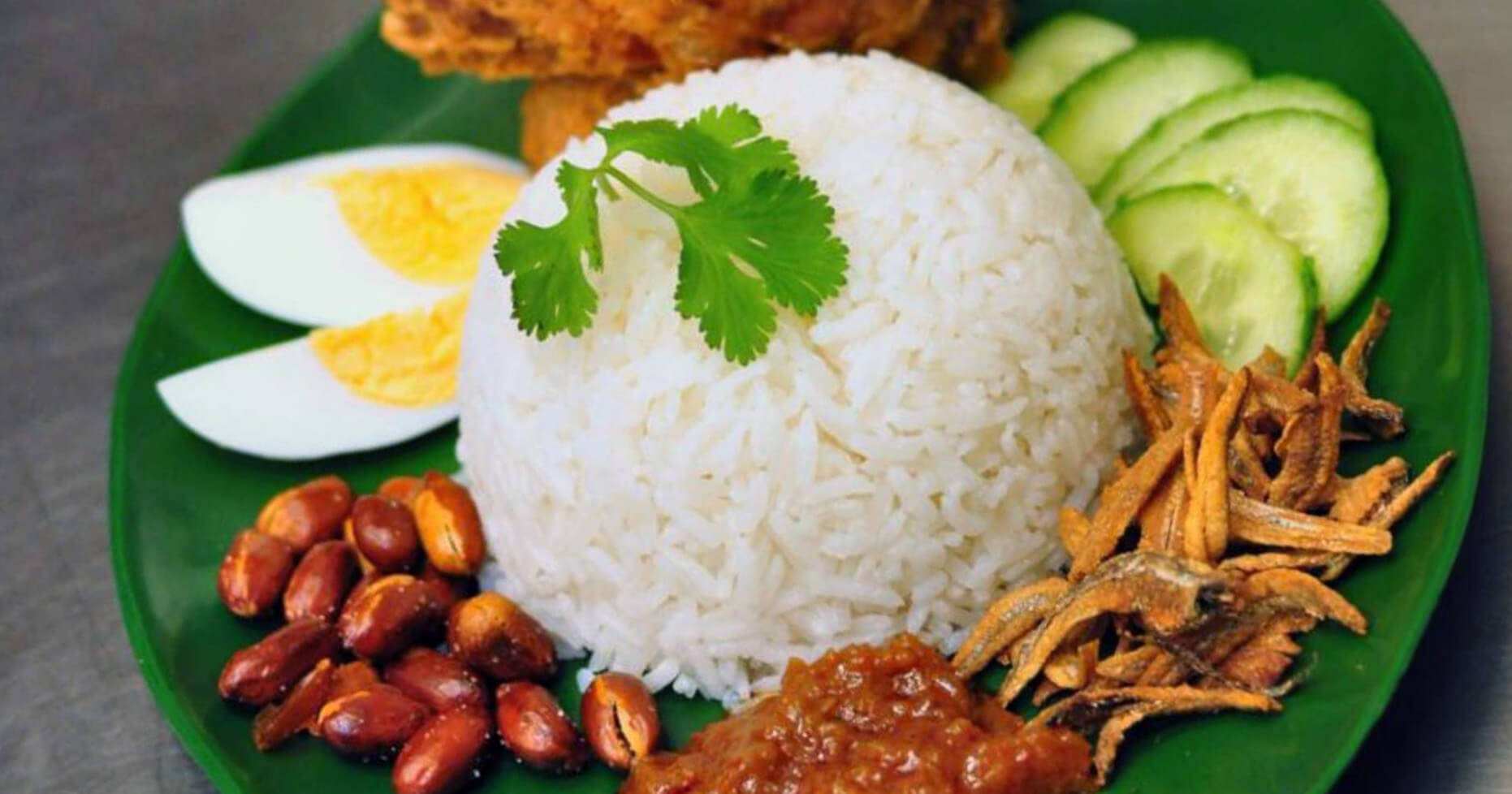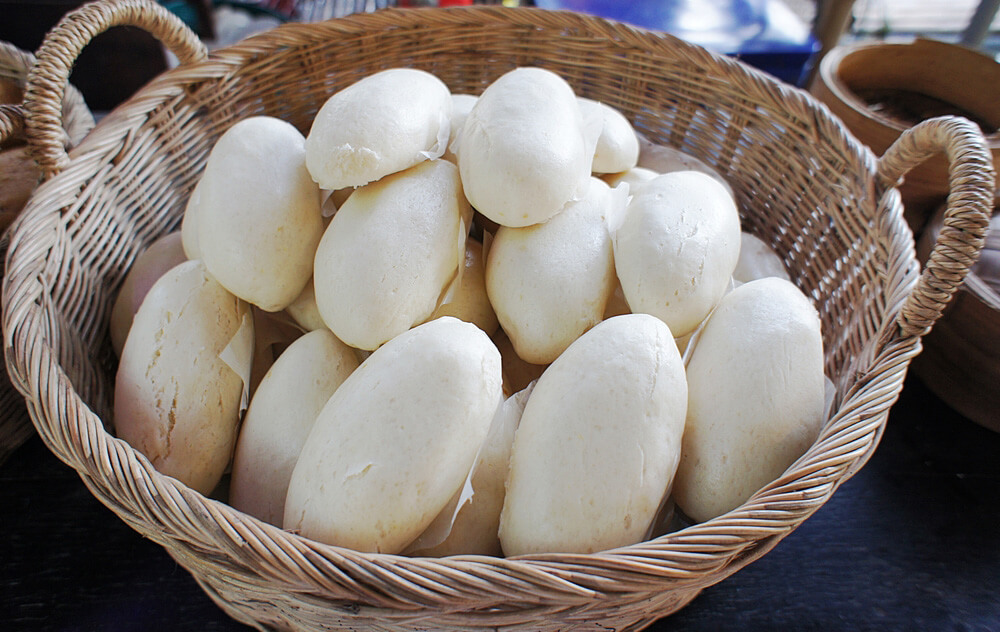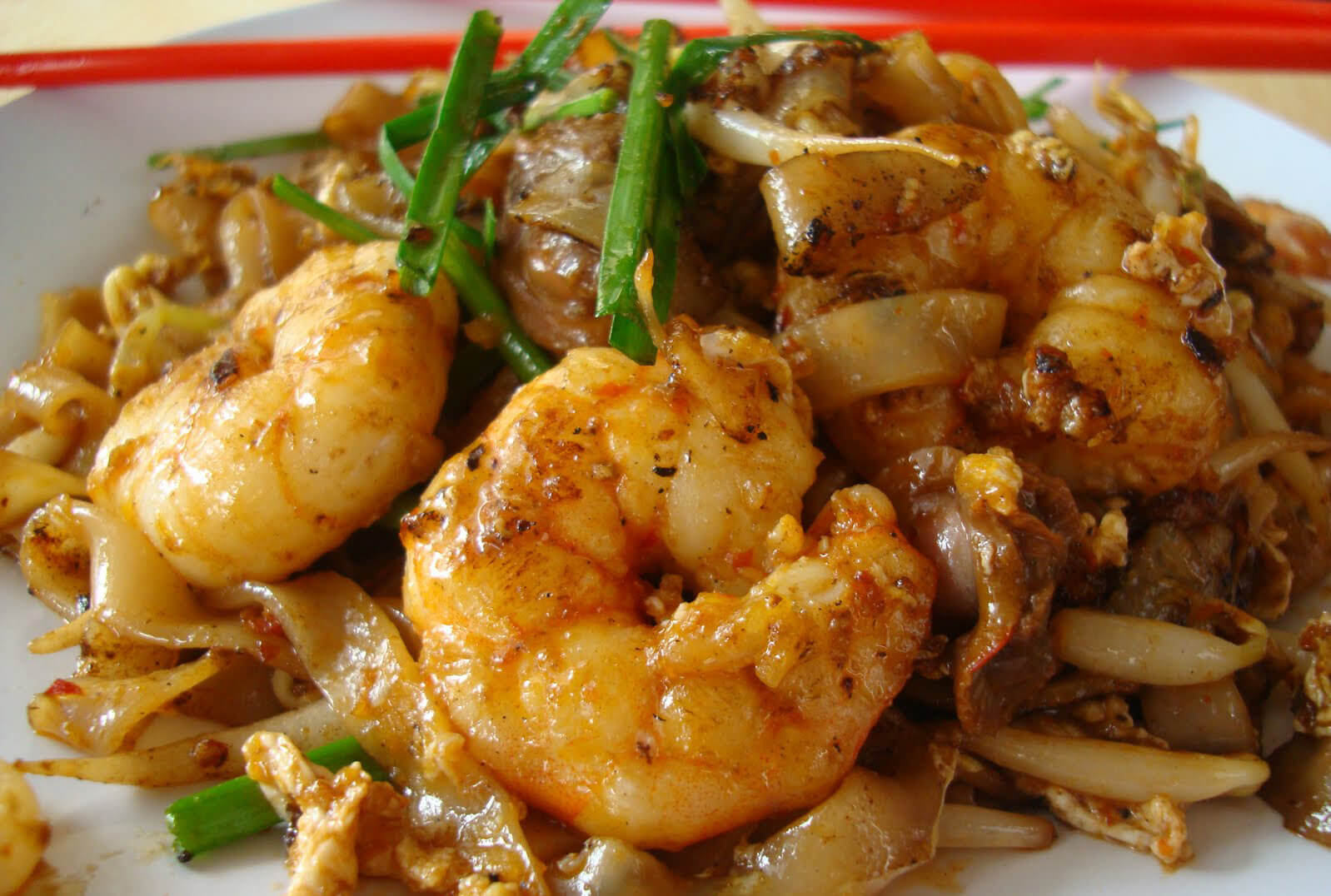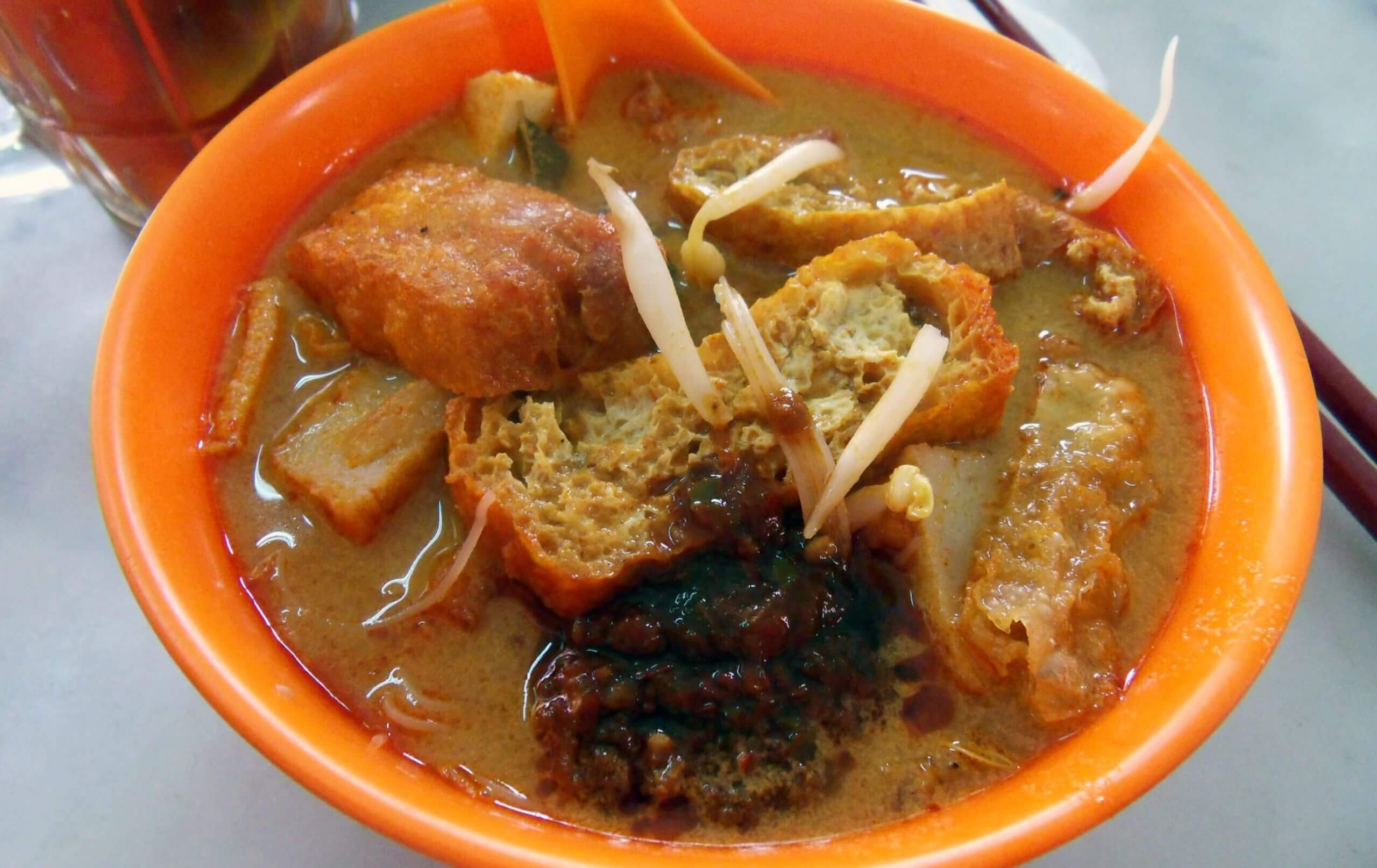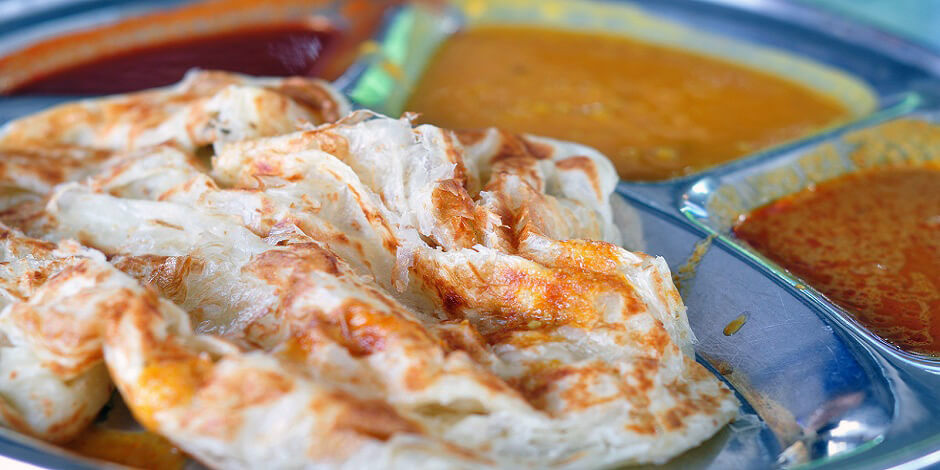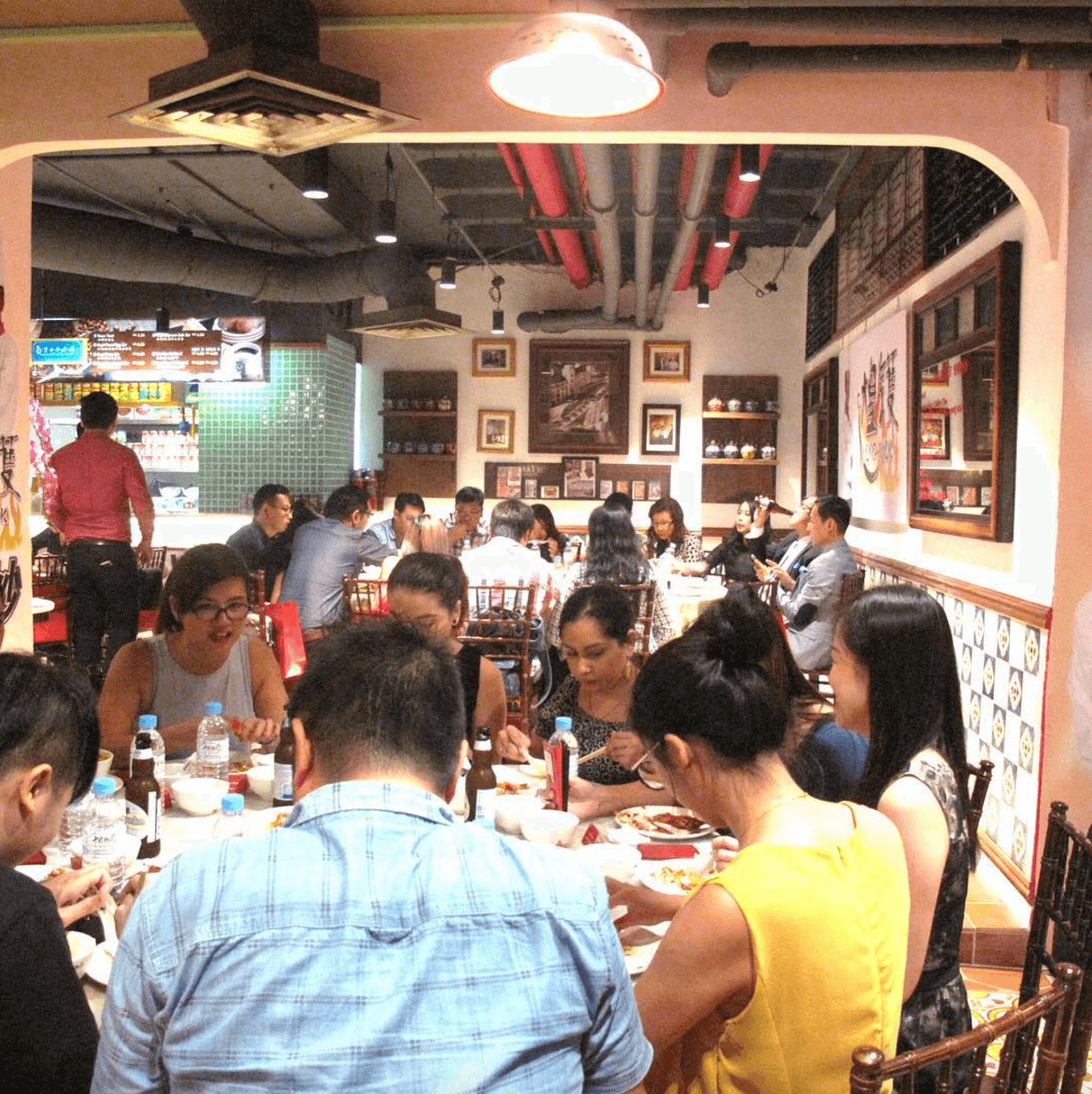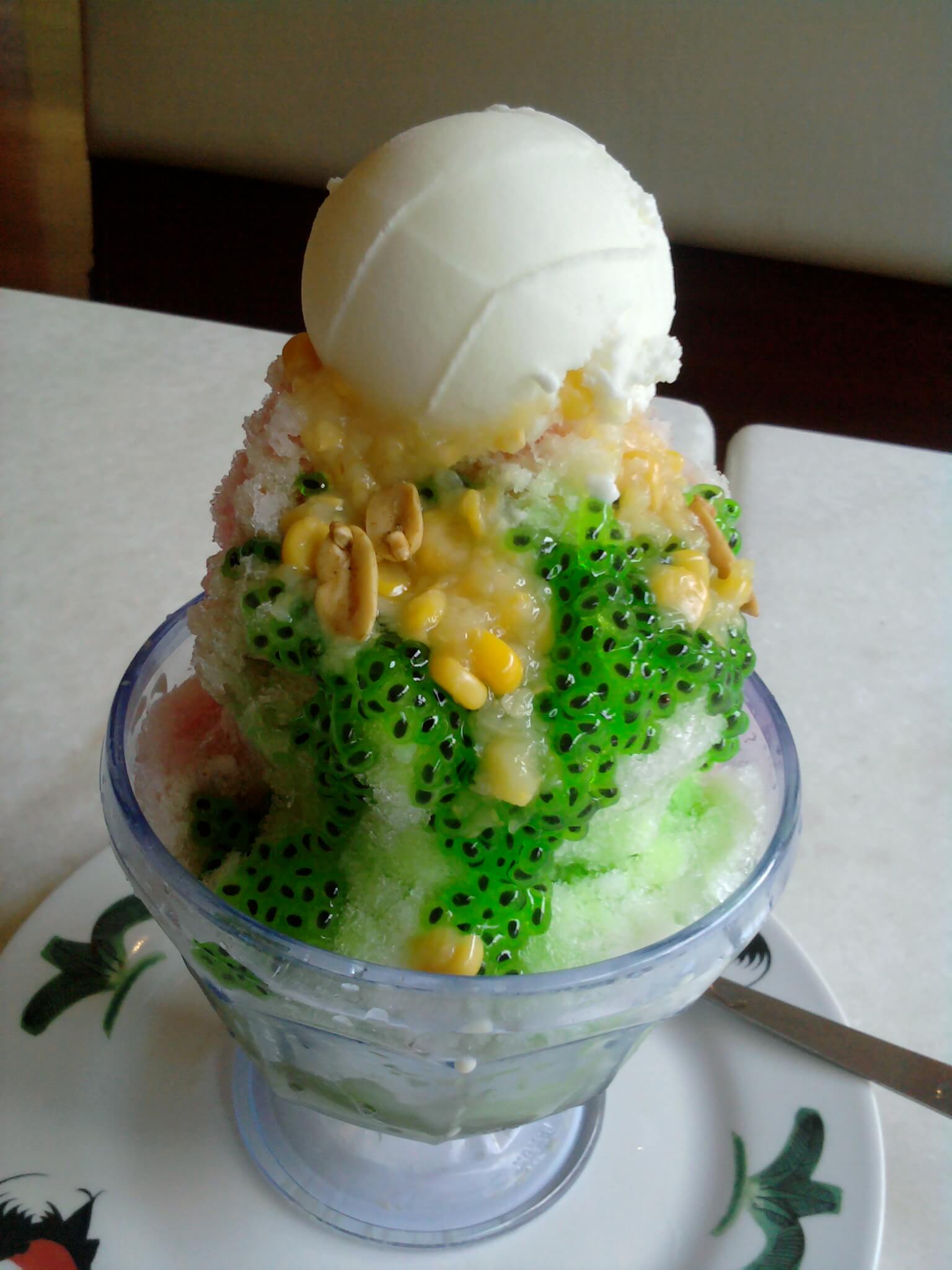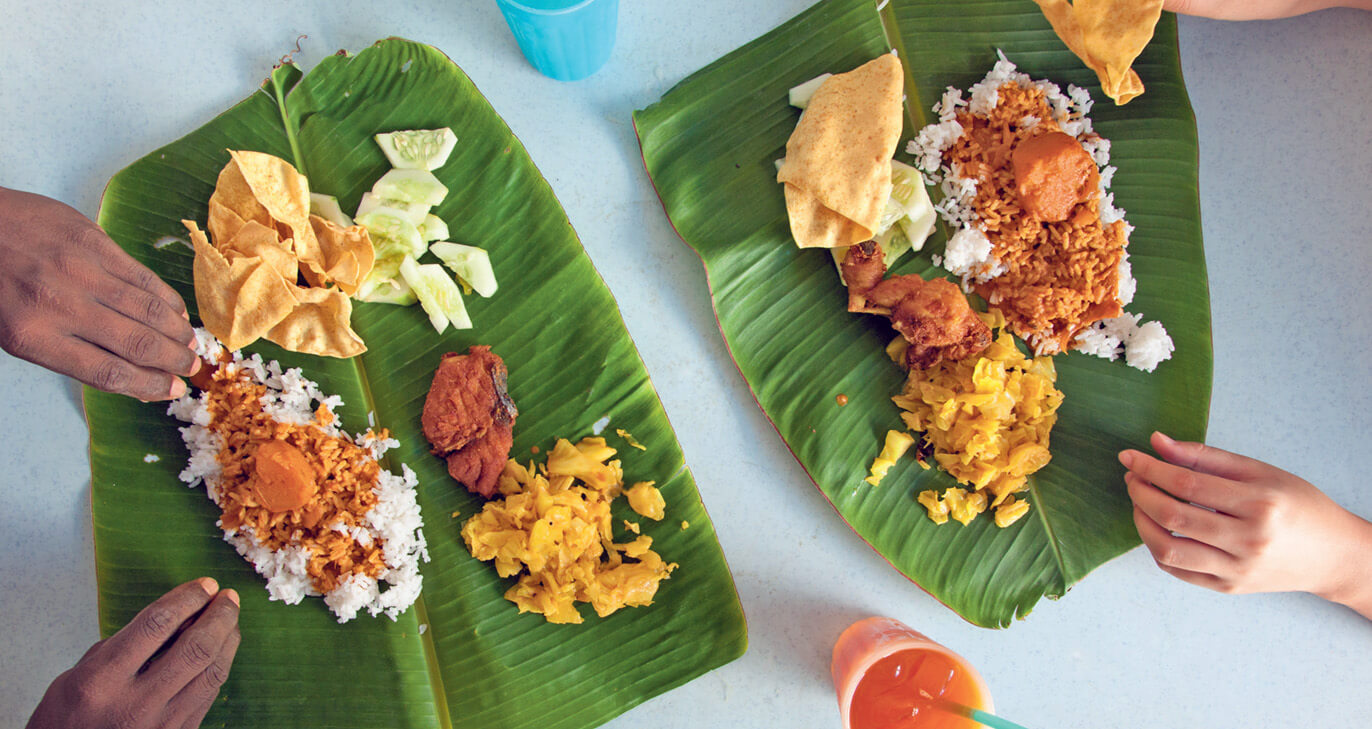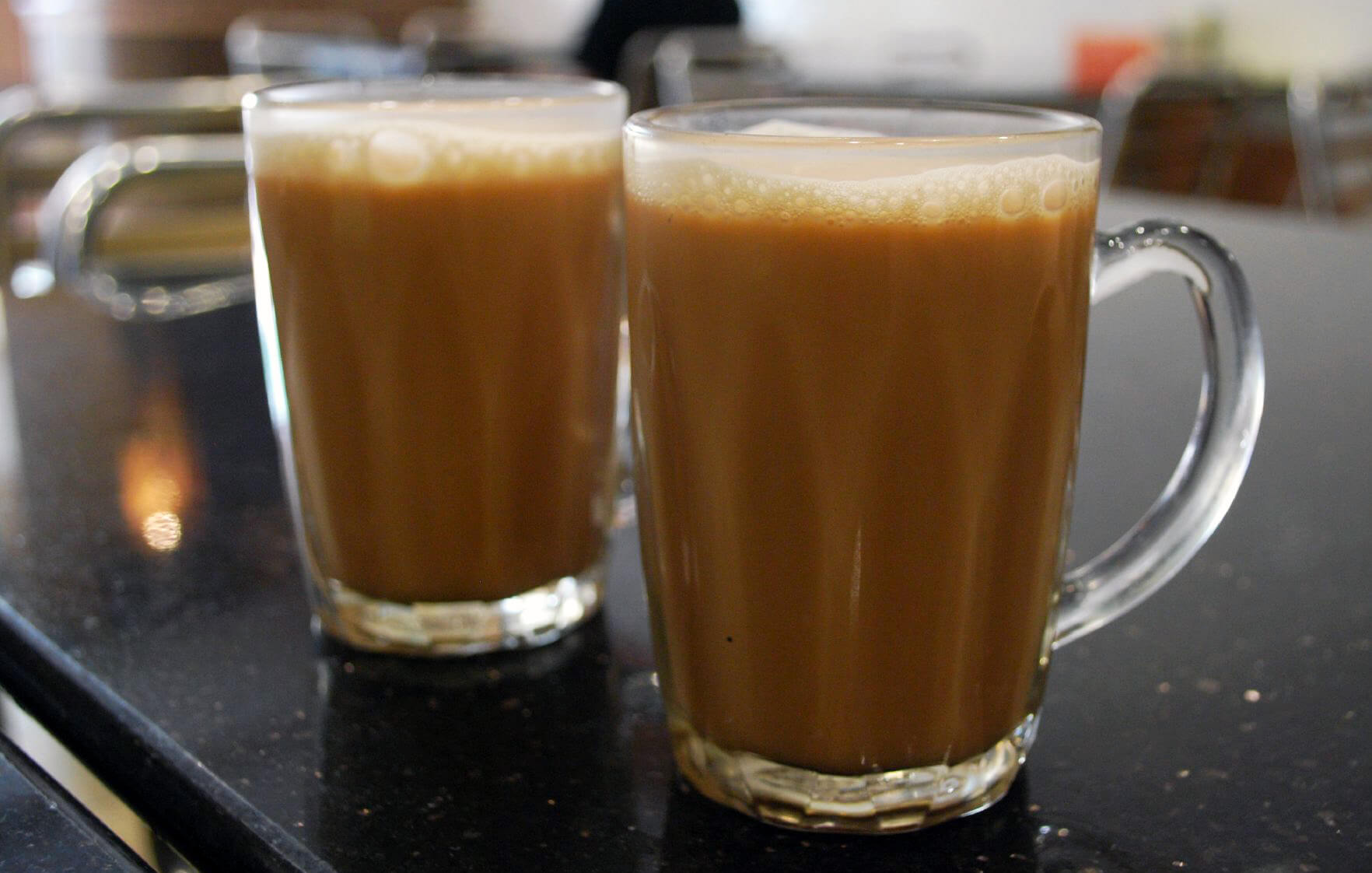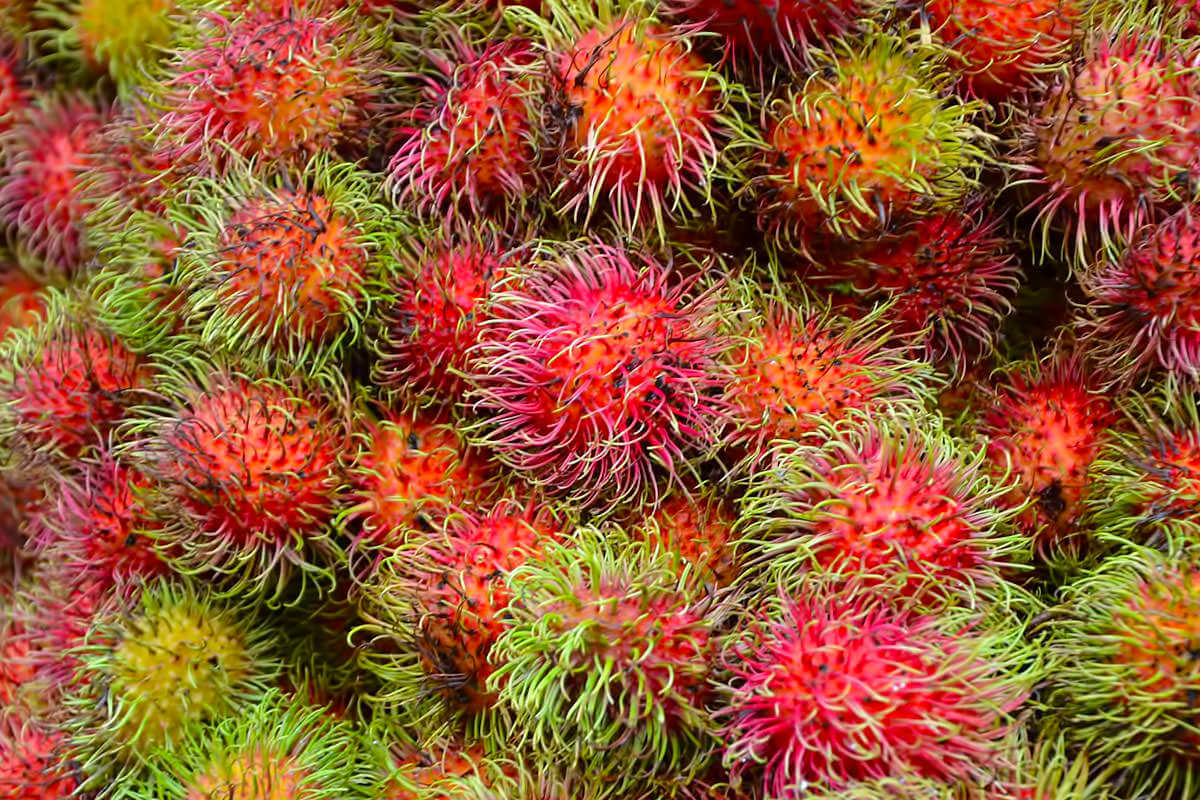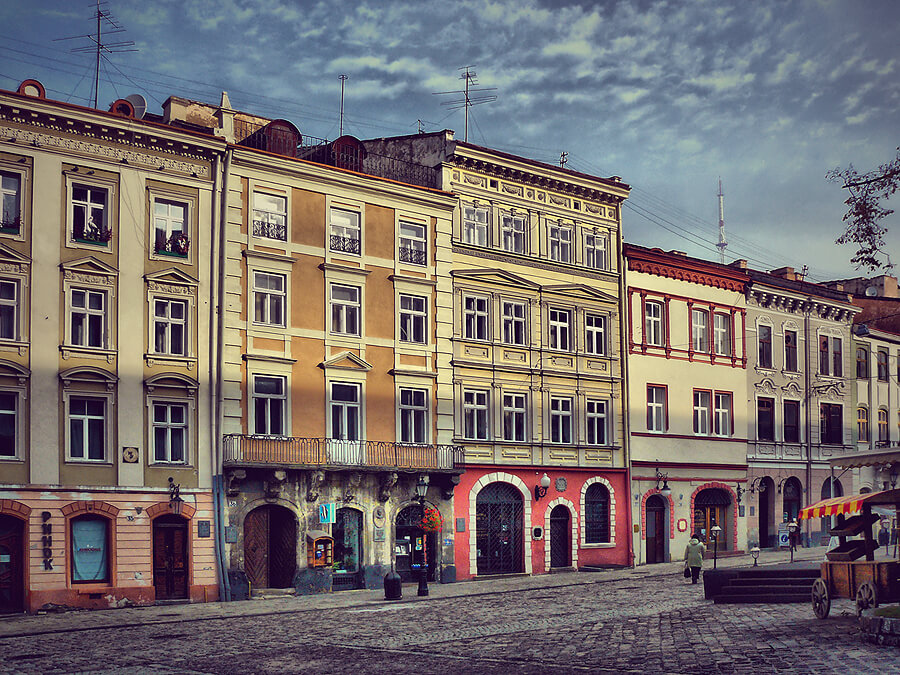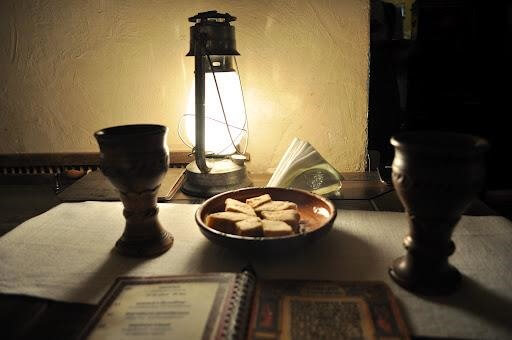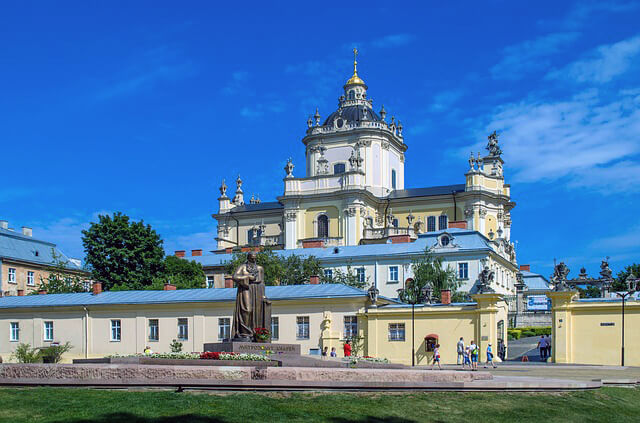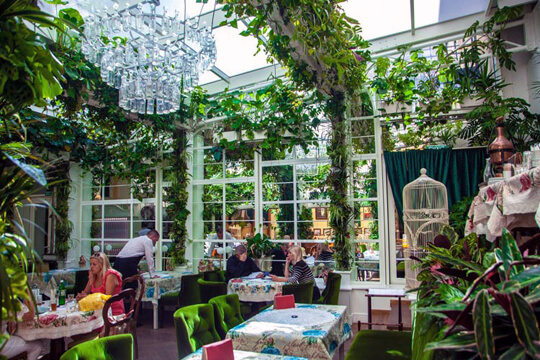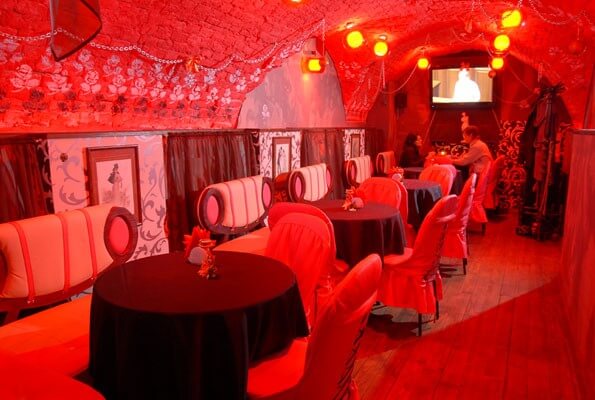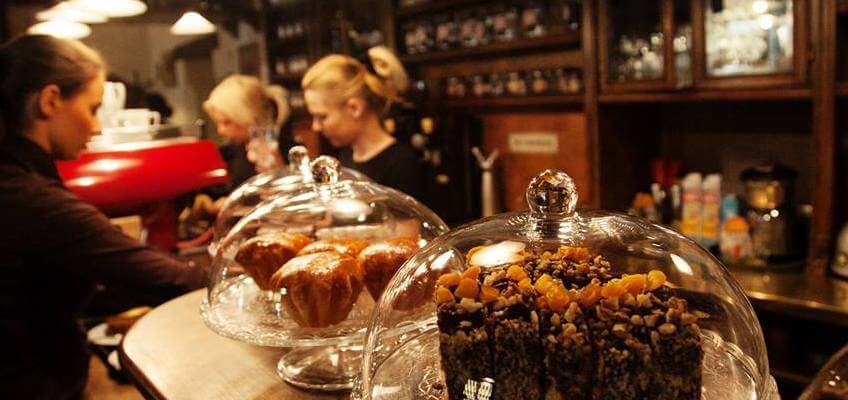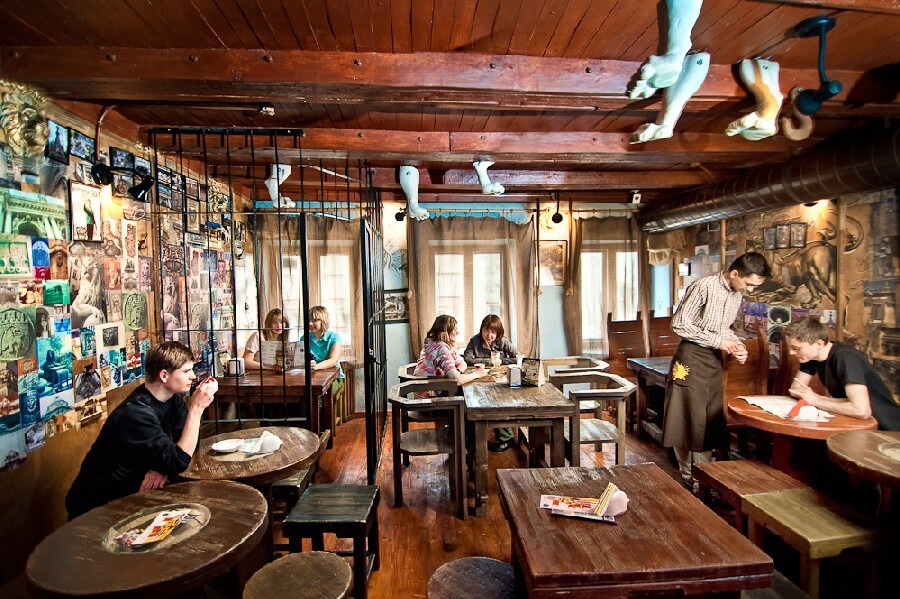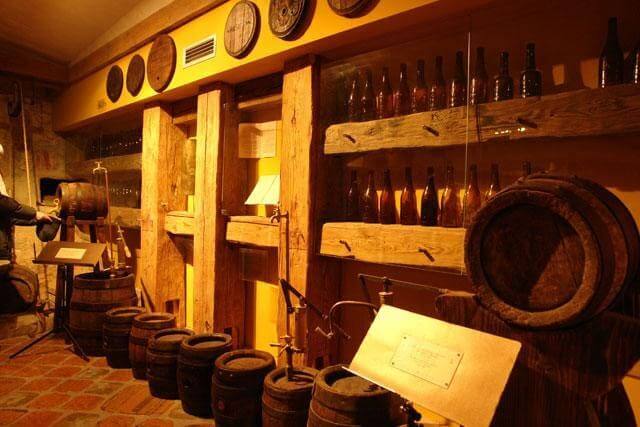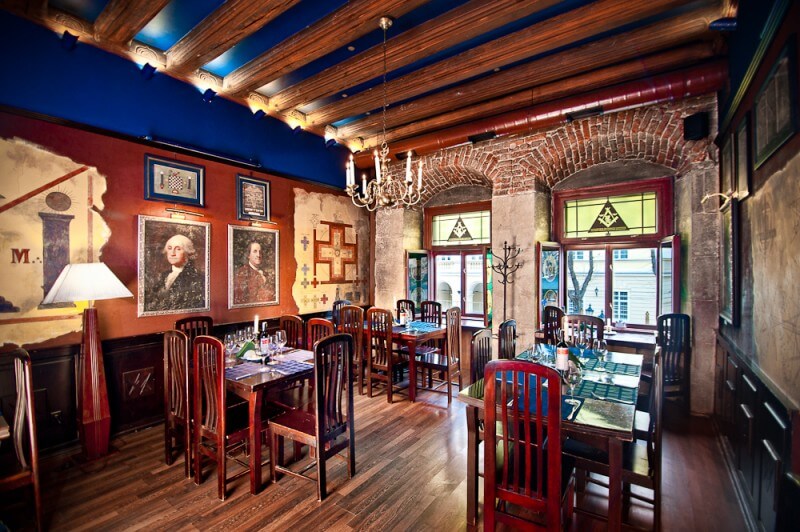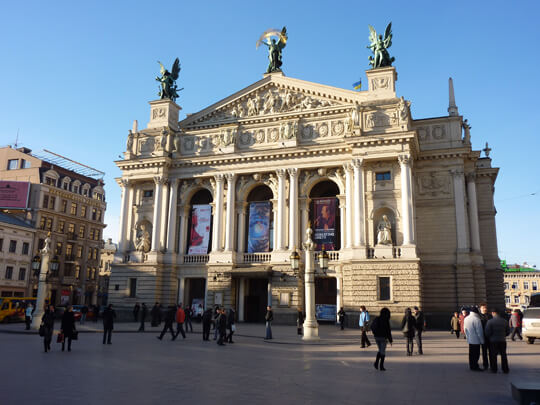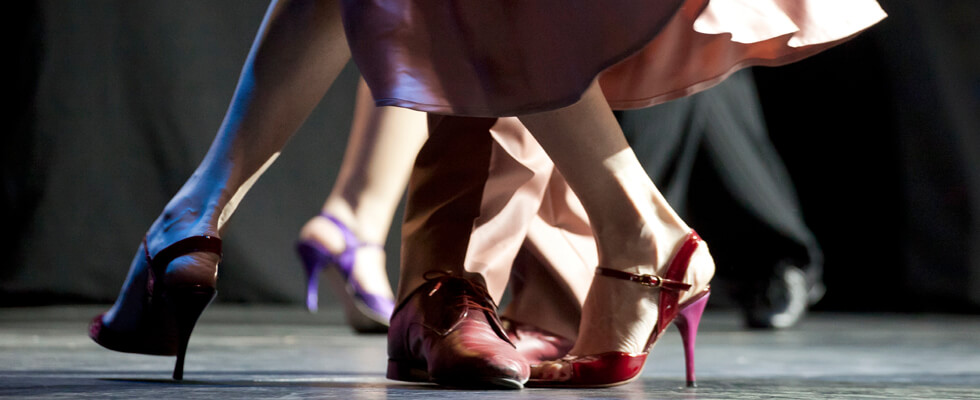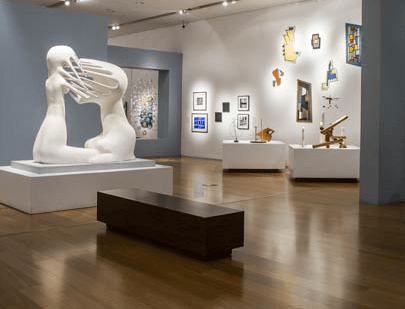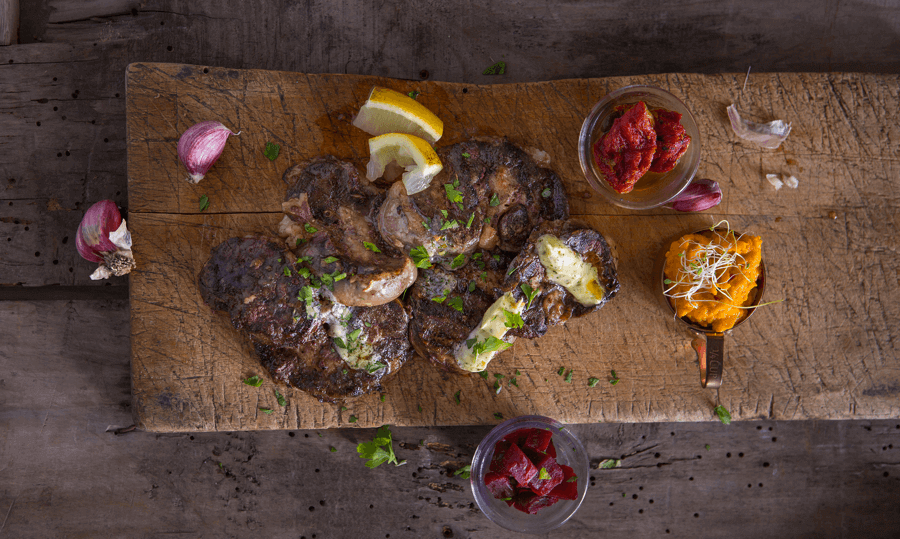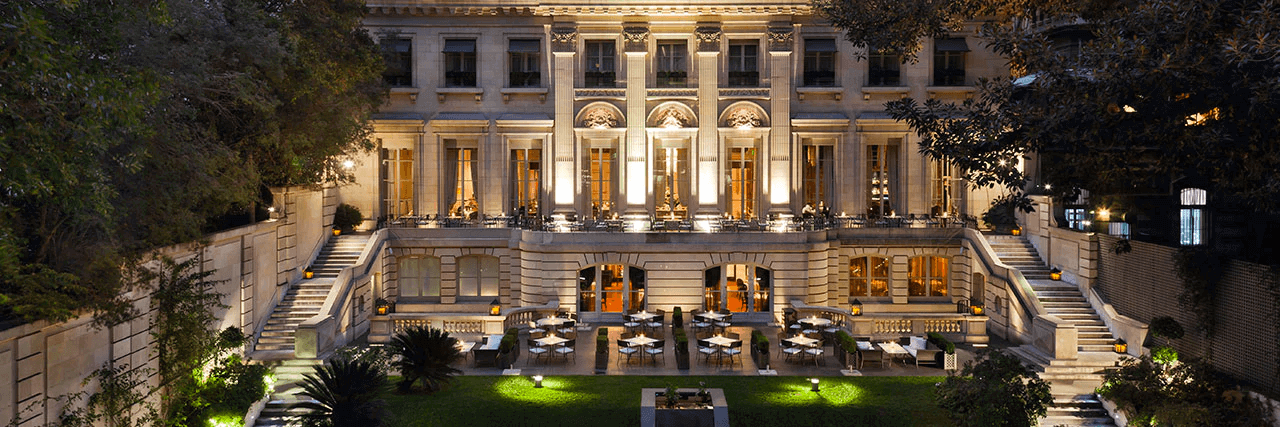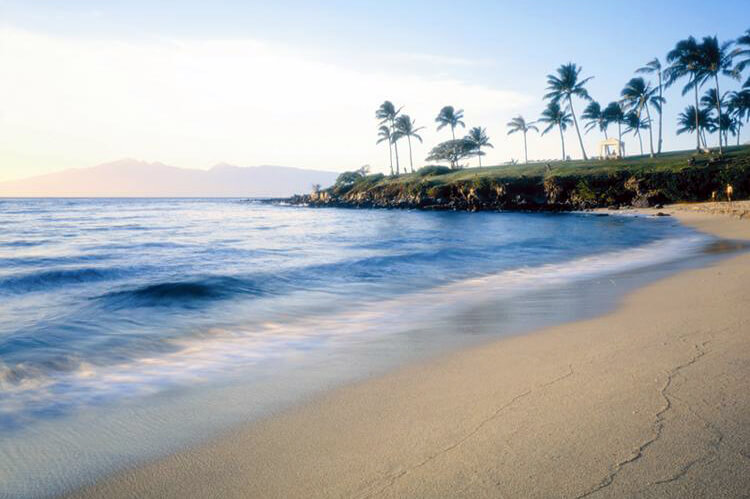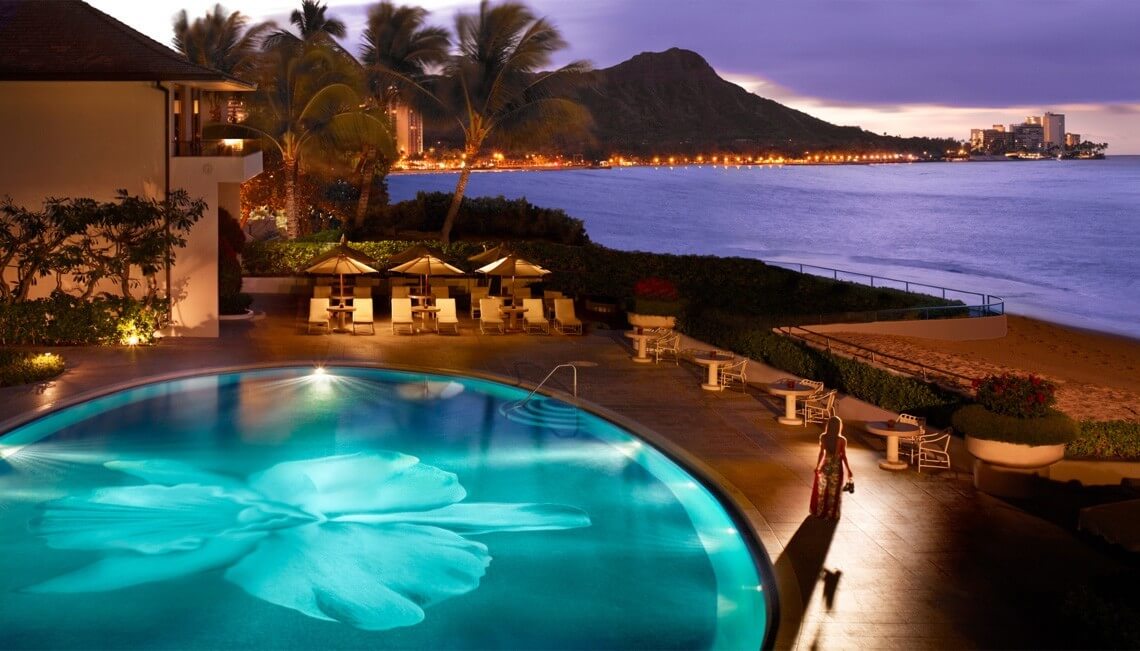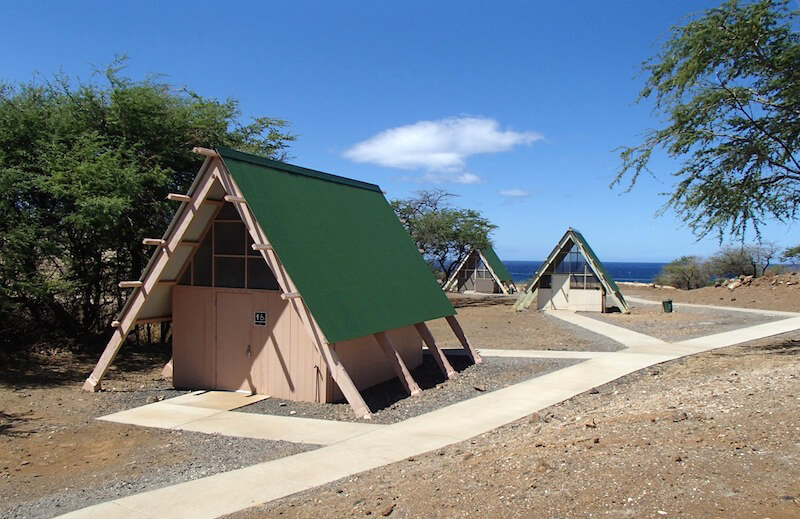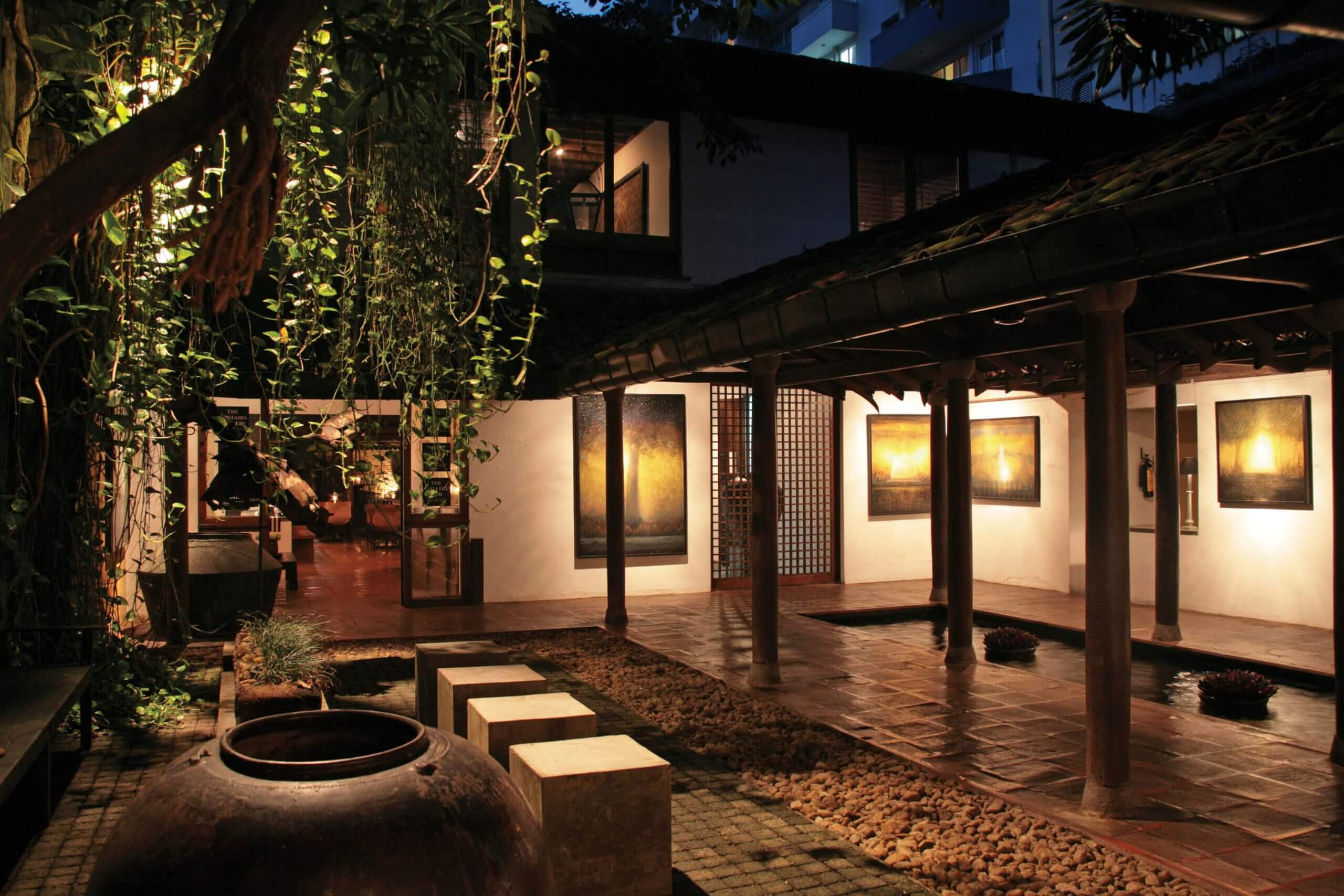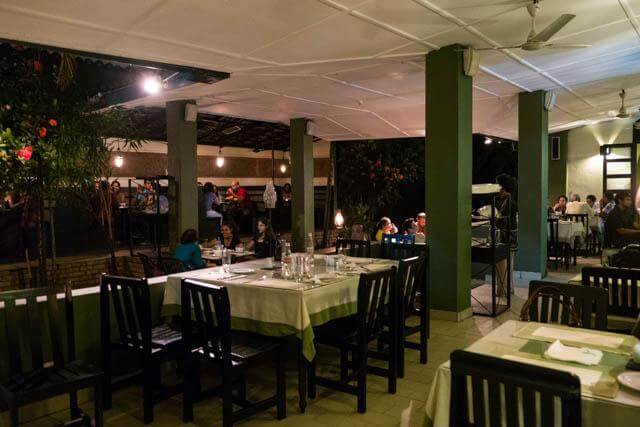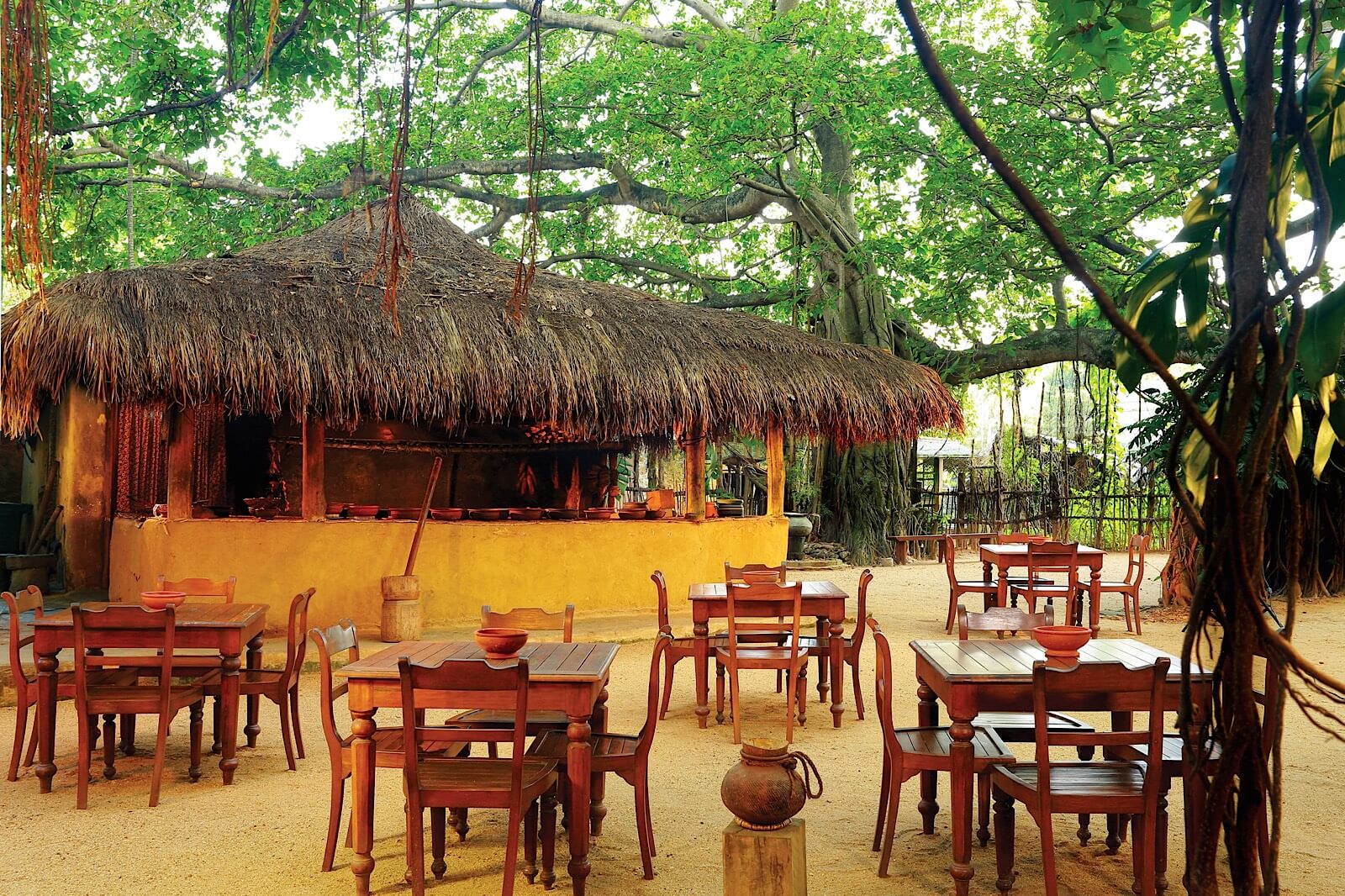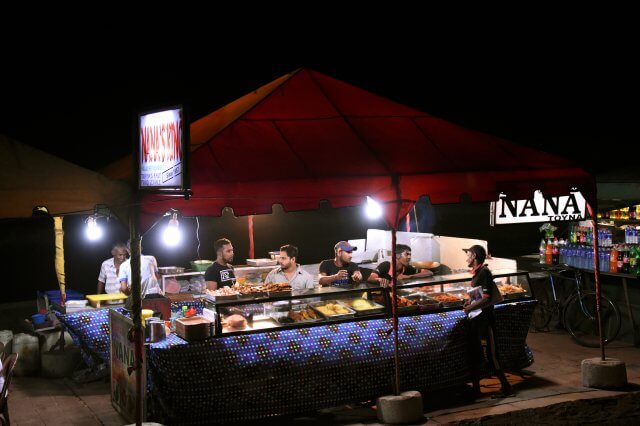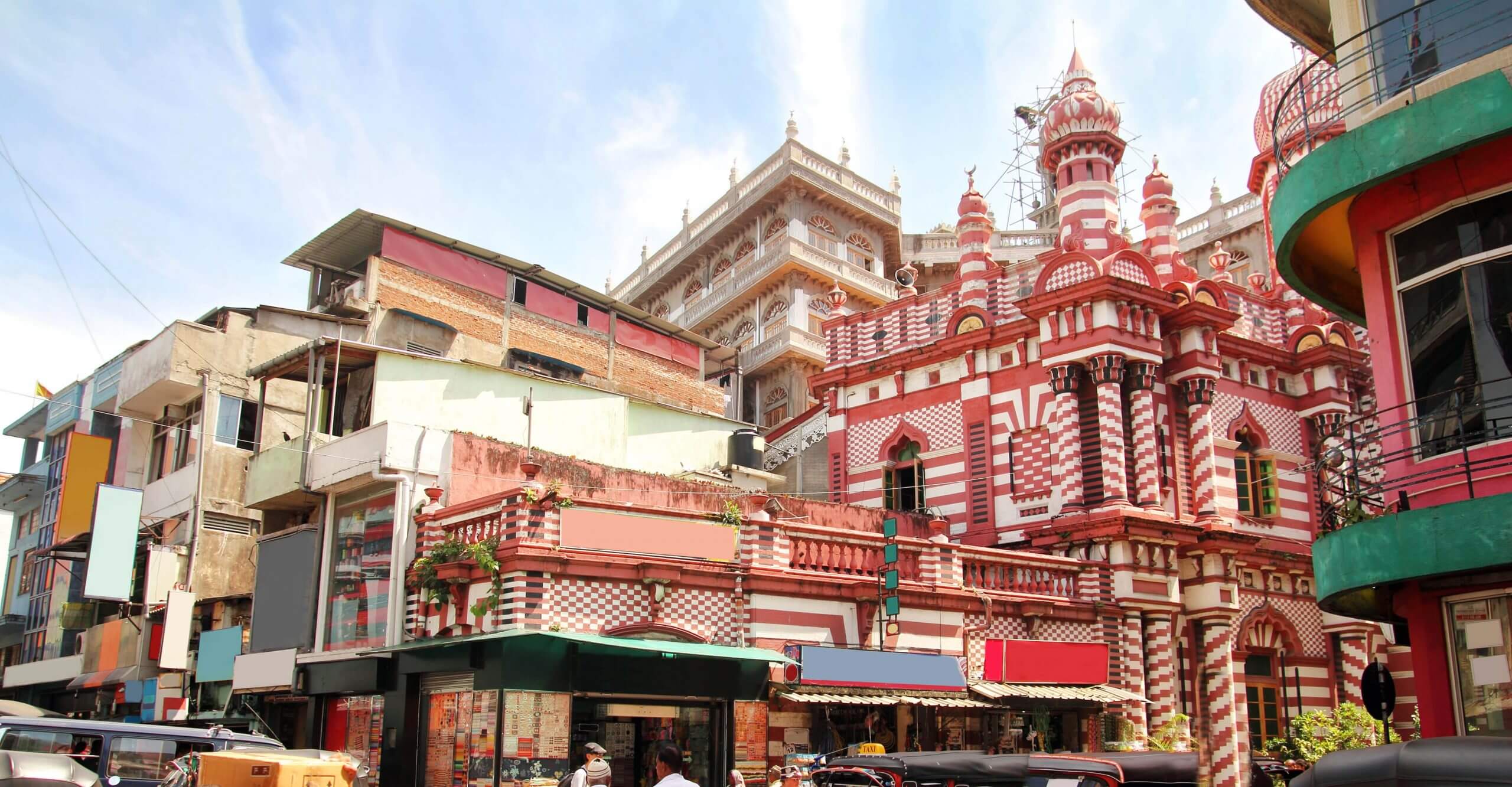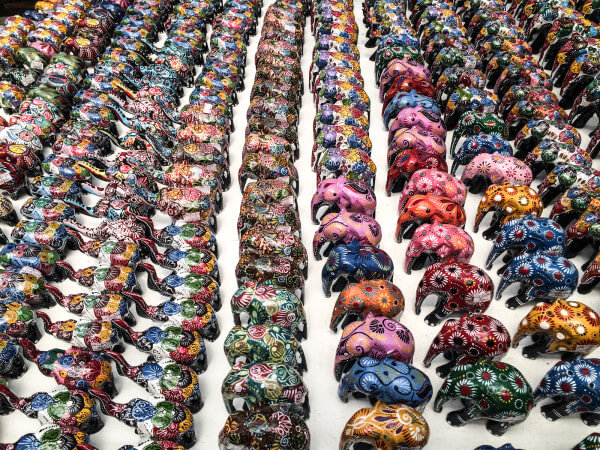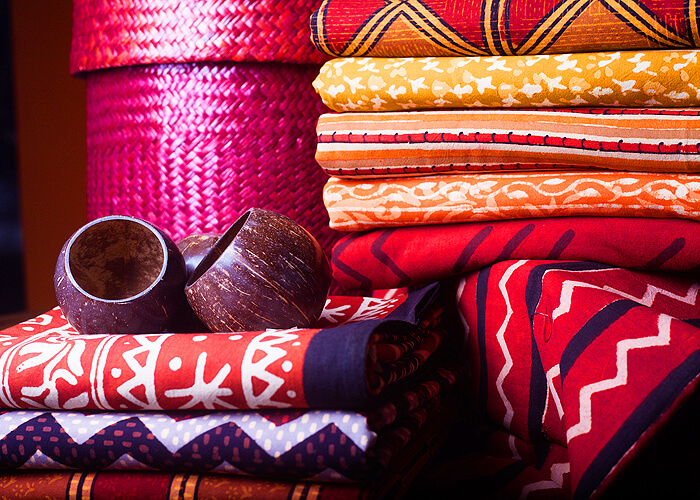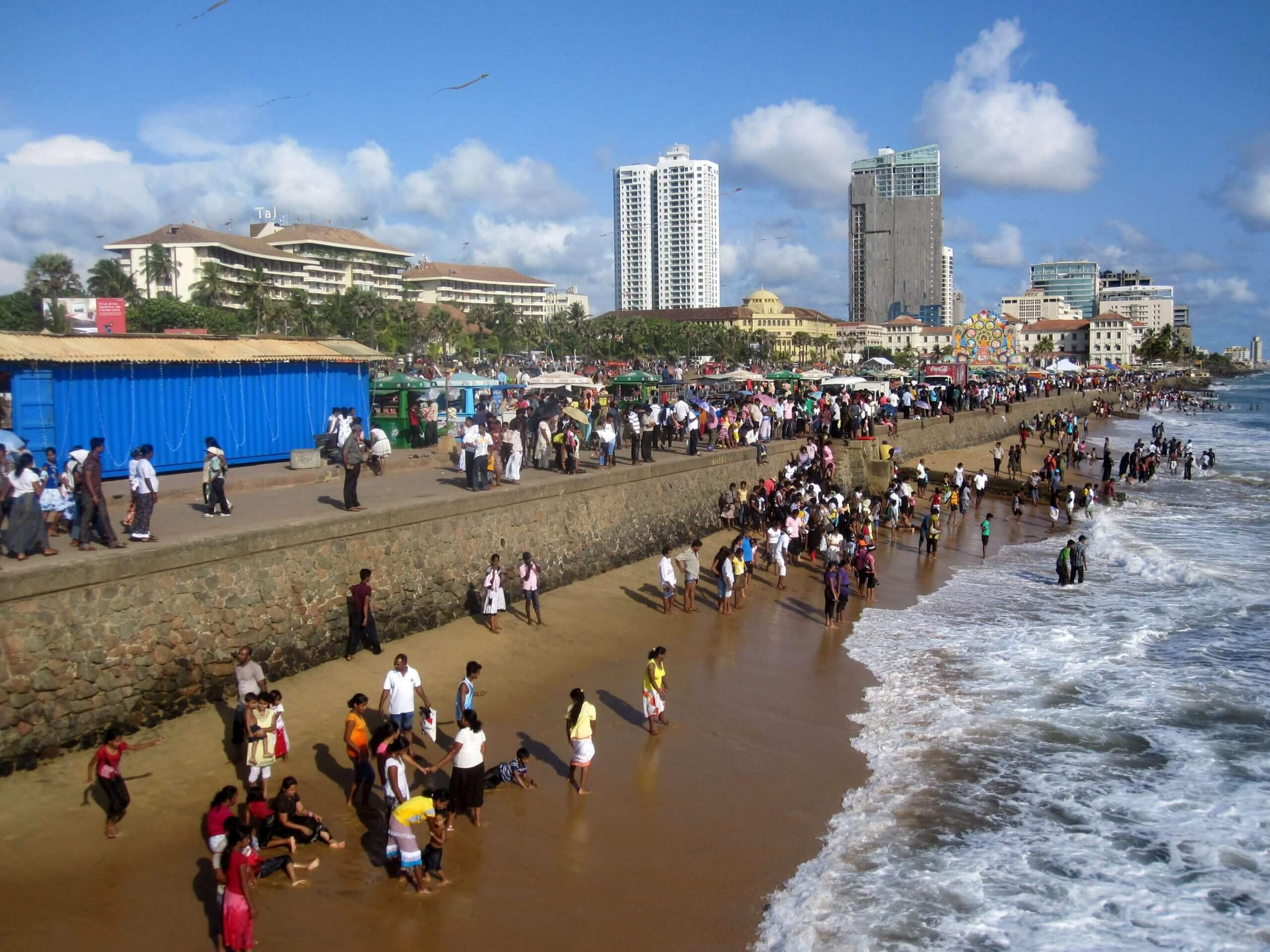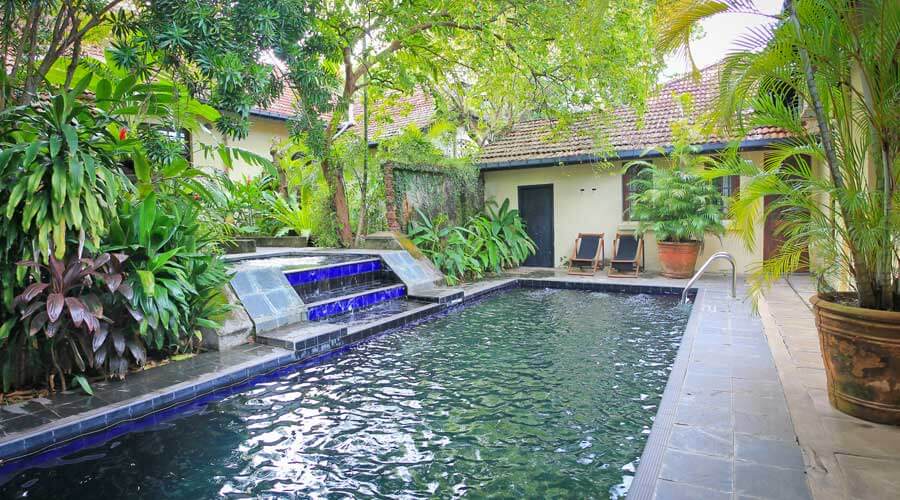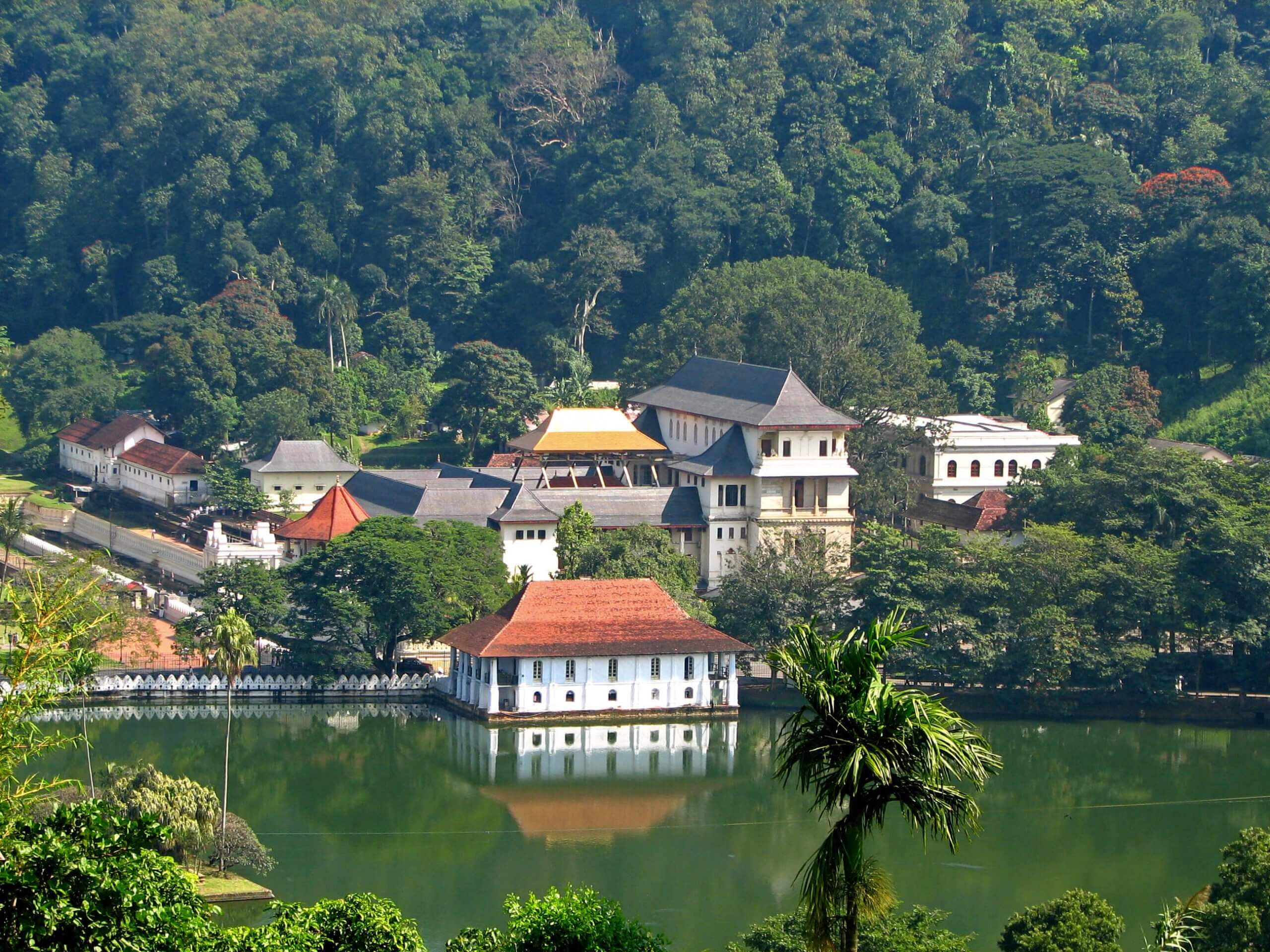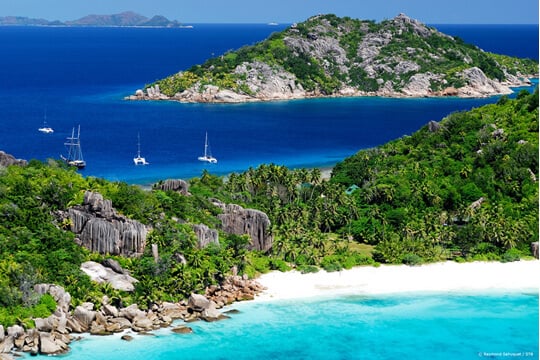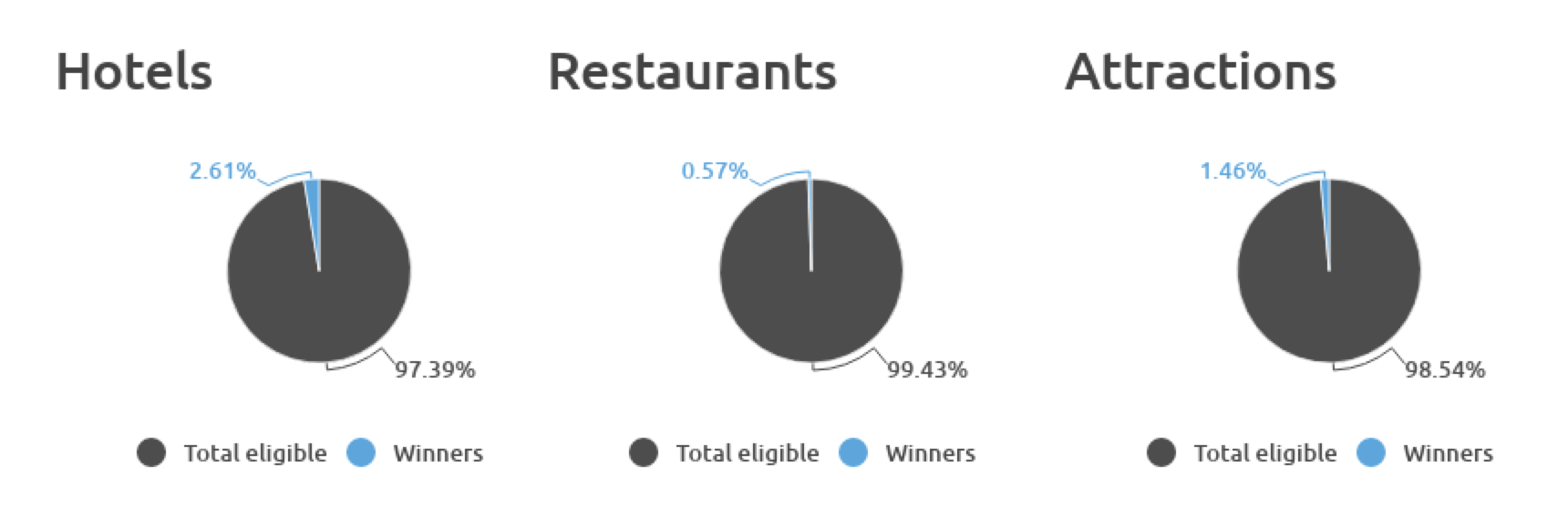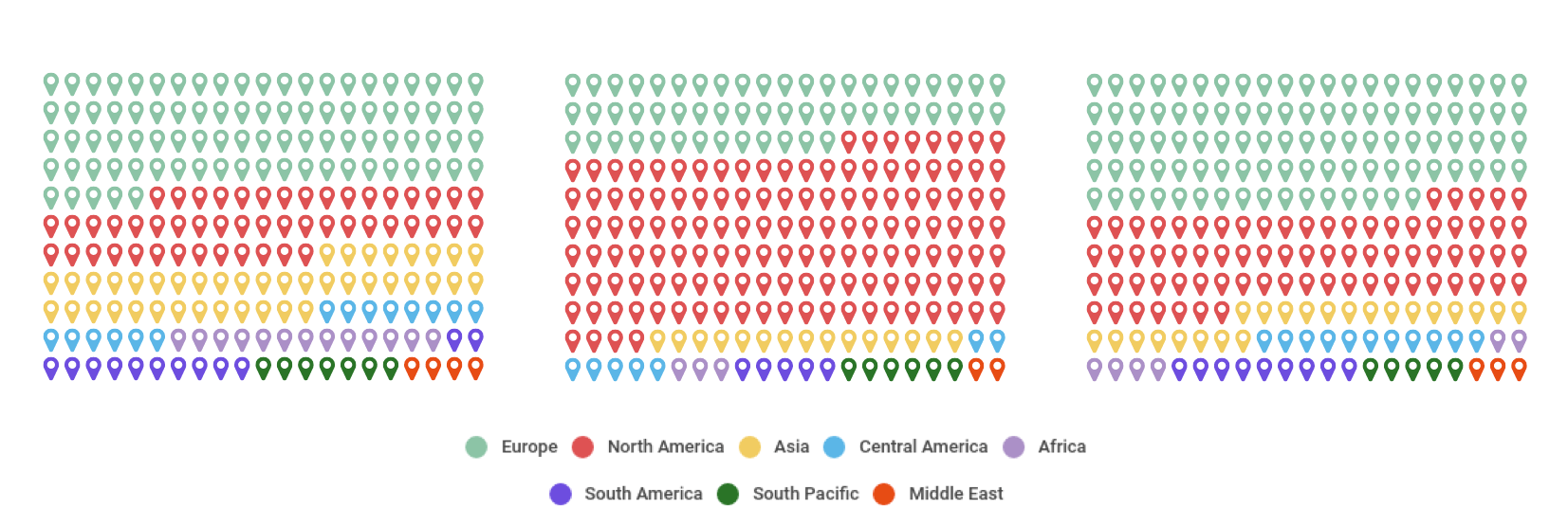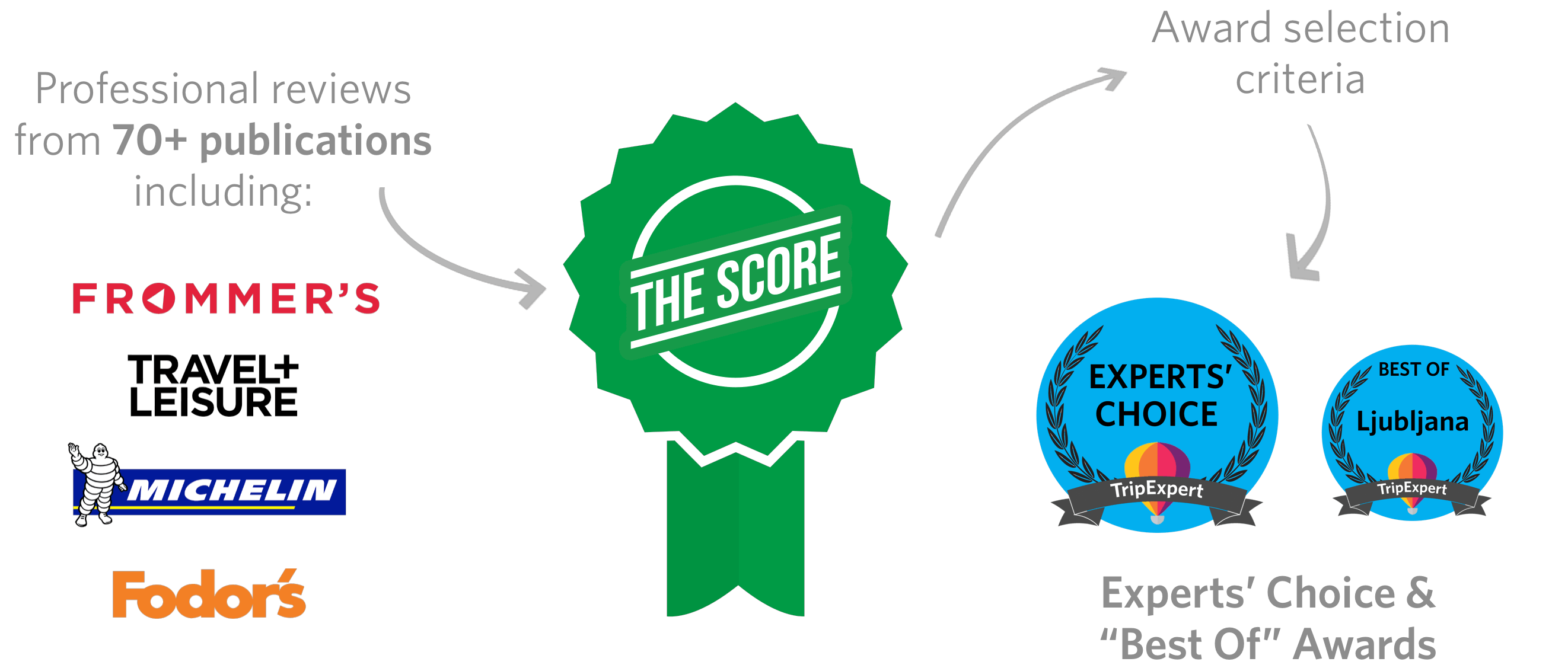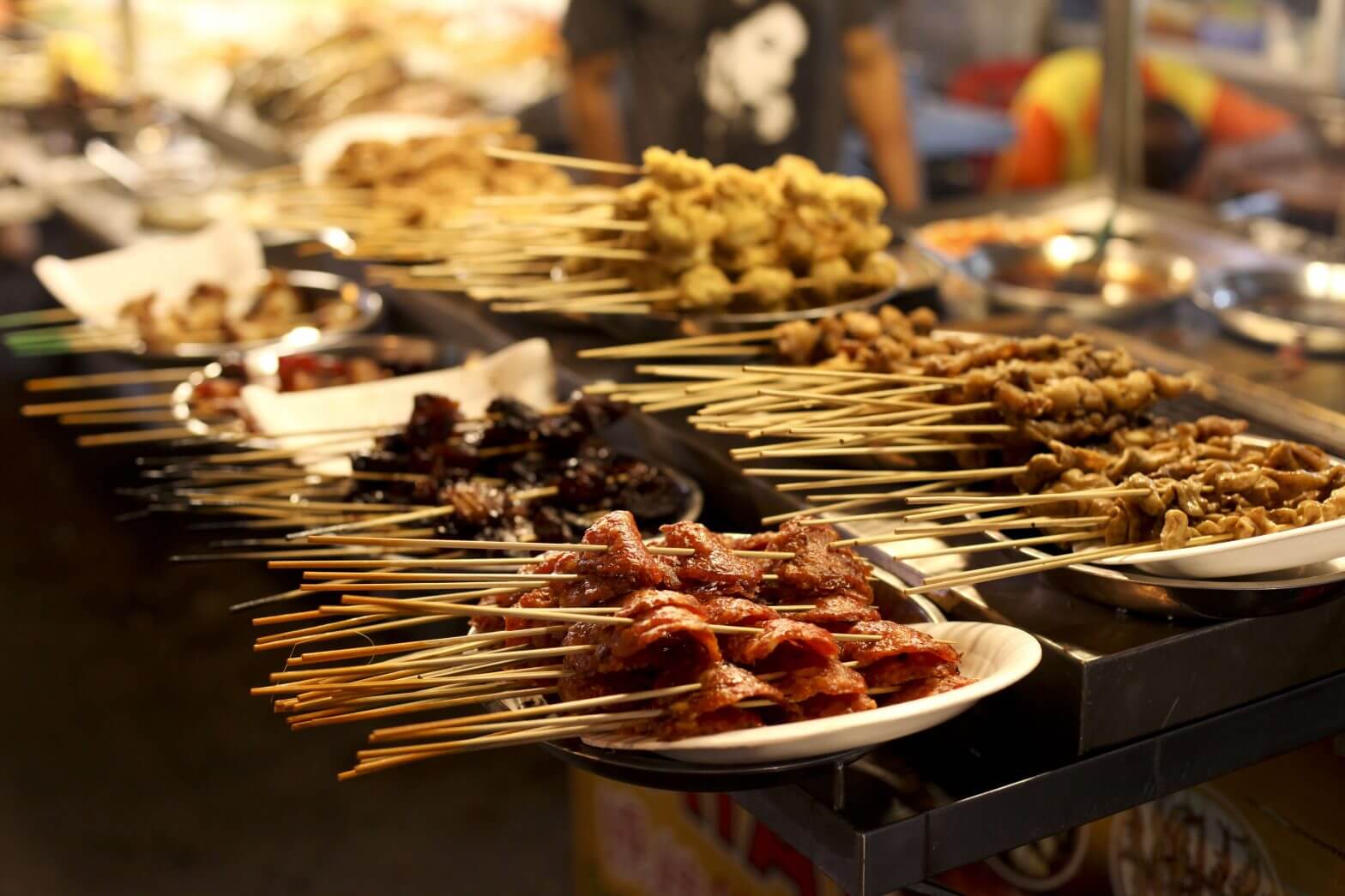
No visit to East Asia is complete without sampling what the street vendors have to offer, and Kuala Lumpur, Malaysia is no exception. Malaysian culture — and by extension, culinary heritage — is a unique blend of Malay, Chinese and Indian influences. In the enormous range of flavors and culinary styles you’ll encounter, you’ll recognize ingredients and elements from elsewhere in Asia, but with a distinct Malaysian twist. And while there are lots of great restaurants in KL, sometimes you’re just in the mood to grab a plastic stool and enjoy street-side barbecue skewers under strings of paper lanterns, join locals under a tarp for a steaming bowl of tangy laksa soup or indulge yourself with a sticky-sweet roti at a buzzing night market. When you are, we’ve got you covered:
Start your day with a serving of nasi lemak, a classic Malaysian dish of rice cooked in coconut milk with anchovies, cucumbers, roasted peanuts, hard boiled egg and spicy sambal sauce, wrapped in a banana leaf. This eclectic breakfast packet makes for a very hearty meal and — perhaps surprisingly — was included in TIME‘s 2016 list of healthiest breakfasts from around the world.
My favorite nasi lemak stall, also hugely popular with locals, is at the corner of Jalan Alor and Changkat Bukit Bintang. Line up early, because it’s gone by noon. Pile on extras of your choice, from eggplant to beef curry to fried fish.
Jalan Alor is a humming street food hotspot, even after the nasi lemak is long gone. The street is crammed with little shops and stalls that welcome a mix of tourists and locals at all times of day, conveniently around the corner from the nightlife on Changkat Bukit Bintang. At night, the street fills up with plastic tables and chairs, transforming into a giant, buzzing outdoor restaurant. Try the shaokao, Chinese-style barbecue cooked street-side. Pick from all sorts of fresh meats, vegetables and seafood, and I’d recommend getting a skewer or two of the mantou (little bread pillows), which go well with everything.
On Wednesday evenings, head to the buzzing Taman Connaught Night Market (also known as Cheras Pasar Malam), where you’ll eat your way along two kilometers of food and goods stalls. You’ll find more than your fill of both classic and creative street food options: curry noodles, barbecued seafood, Malaysian-style savory pancakes, char kuey teow (fried noodles with meat, seafood and vegetables) and numerous other delicious local specialties served up fresh. Brave the line and infamous smell to try the stinky tofu. Pick up some kuih — best explained as bite-sized steamed cakes — or refreshing coconut jelly for dessert.
You can’t leave KL without trying laksa — a classic Malaysian rice-noodle soup available in a range of regional varieties and not for the flavor-shy! Two of the main types you’ll encounter are curry laksa, which has a coconut-milk curry base, and asam laksa, with tangy tamarind and seafood. I can personally vouch for a piping hot bowl of spicy asam laksa as the perfect antidote for getting caught in an afternoon monsoon. Grab a bowl at the Taman Connaught Night Market, duck into a stall on Madras Lane in KL’s Chinatown, off of the main drag Jalan Petaling, or enjoy a bowl under the stars and paper lanterns on Jalan Alor.
Reflecting Malaysian cuisine’s Indian influences, roti canai are another delicious staple. Corner stalls and hole-in-the-wall restaurants across the city serve up both savory and sweet varieties of this thin, flaky bread. Try it with lentil, meat or fish curry, or — my personal favorite — with banana and condensed milk.
If you’re looking for something a little more upscale (by street food standards), head to Lot 10 Hutong Food Court in Bukit Bintang, where you can eat your way around an indoor collection of the city’s most famous hawker stalls. A KL native, nostalgic for the street food of his youth but frustrated by how dispersed and inaccessible some of his favorite food stalls were, convinced a number of the oldest and most famous vendors to open stations in a downtown mall. Thanks to him, you can sample some of KL’s best street food in one clean and well-maintained space; and while prices are increased from what you might find on the street corner, everything is still extremely affordable.
Must-tries include the black hokkien mee at Kim Lian Kee — the smoky, rich KL version of a classic Malaysian braised egg noodle dish — and the Chua Brothers’ delicious homemade fish balls, which they’ve been selling since 1930. If you’re in the mood for adventure, try an ais kacang from Oriental Dessert (not technically one of the market’s heritage brands, but still worth trying): a mountain of shaved ice covered with all sorts of ingredients including jello, peanuts, coconut, red beans and sweet corn, among others, and drizzled with condensed milk. You’ll either love it or hate it.
The neighborhood of Bangsar is home to lots delicious Malaysian Indian cuisine, including the popular banana leaf rice. Dive into a scoop of fresh rice served up on a bright green banana leaf, smothered in your choice of seafood, meat and vegetable curries and spicy, flavorful condiments. Try Devi’s Corner, although for the banana leaf rice, you’ll have to sit in the upstairs restaurant area (so I guess it’s technically not street-food, but it’s too delicious not to mention).
Wherever you go, treat yourself to a steaming, creamy glass of the ubiquitous teh tarik — literally “pulled tea” because of how it’s poured back and forth during preparation to give it that nice frothy head. This extremely sweet, milky beverage is considered a national drink and will give you just the boost of caffeine and sugar you need to kickstart your day, or explore two kilometers of night market stalls, or beat the heat of a spicy curry… there are a dangerous number of good reasons for one more glass.
If you’re looking to satisfy a sweet-tooth with a healthier option or are on the hunt for something refreshing after a day of exploring, you can’t go wrong with fruit. A hot afternoon calls for at least one coconut from any of the roadside stalls you’ll encounter, where they’ll chop off the top, hand you a straw and voilà: a whole coconut’s worth of fresh and delicious coconut water. Stop off at a fruit stand like the ones lining Jalan Alor to snack on some of the country’s exotic offerings like the tangy rambutan, creamy chikoo and crisp rose apple. If you’re feeling brave, try the infamous durian, which locals will try to convince you doesn’t actually taste anything like its hot garbage scent. If you’re like me and can’t get past the smell, grab yourself a cup of durian ice cream it has a nice, subtle flavor without any of the notes of hot trash so overpowering in the fresh variety.
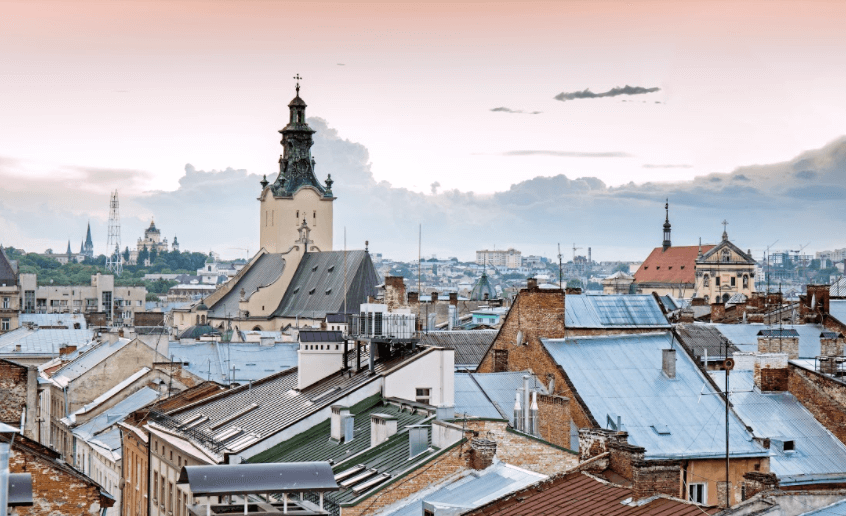
Lviv is Ukraine’s cultural capital — a literary city in the west of the country that leans closer to western European than cities elsewhere in the country. It’s gradually becoming more popular, but is still untouched compared to other regional destinations like nearby Kraków in Poland. Discover this Ukrainian gem in 48 hours with our guide.
When you arrive in Lviv, one of the first things you will notice is the city’s charming old town. The Old Town is listed as a UNESCO World Heritage site and has yet to be spoiled by tourism like other centers in Eastern Europe. A ramble through the city streets will help you gain an appreciation for the vibrancy of Lviv. If you are feeling adventurous then why not climb to the top of the the City Hall tower in the main square, Ploshcha Rynok.
After all of that, you’ll have almost definitely worked up an appetite. Thankfully, Lviv is home to a bustling cafe culture and some very delicious (and budget friendly!) restaurants. A tasty lunch can be enjoyed for a very reasonable price at Museum of Ideas (Valova, 18a), while vegetarian dishes can be enjoyed at Pid Klepsydroyu (5 Armenian Street).
The refectory in the Museum of Ideas
Afterwards, a jaunt to check out the city’s famous cathedrals and churches is sure to satisfy those craving spirituality. Among the most impressive are St. George’s, the Eastern Rite Catholic cathedral (Ploshchad’ Svyatogo Yura, 5), the Dominican church and monastery (Museina Square, 1), the Cathedral Basilica of the Assumption — often simply called the ‘Latin Cathedral’ (Katedralna Square), and the Armenian Cathedral (Virmens’ka St, 7).
After this we suggest you indulge in an afternoon nap in order to prepare for the city’s bustling nightlife.
Upon waking from your slumber, throw on your best outfit (the people of Lviv love to dress up) and head to the super swish Baczewski restaurant (8, Shevska Street), Baczewski offers some of the finest food in the city and their fruit-infused vodka is a must try for any visitor.
Afterwards, we suggest you put your dancing shoes on and check out the city’s famous nightlife scene. For an evening with a difference, we suggest you pay a visit to Cafe Masoch (7, Serbska St.), the venue is named after BDSM pioneer Leopold Ritter von Sacher-Masoch who was born in Lviv in 1836. The seemingly normal bar allows customers to get whipped on request, although those with a lower pain tolerance can just enjoy a regular night out.
Whether you wake up licking your wounds or not, a delicious Lviv-style breakfast is a must. Svit Kavy (6, Katedralna Square) offers some of the best coffee in town alongside a selection of savoury and sweet options to start your day off the right way.
Afterwards, why not check out a traditional banya, a Russian-style bathhouse that is more steam room than sauna. Galaktika Club, a 15-minute bus ride from the Old Town is among the best in the city. There you can also indulge in a massage and other spa treatments.
The banya at Galaktika Club
For lunch, check out Dim Legend, a 5-story restaurant/bar/world of weirdness (48, Staroievreiska St). The food is tasty and the photo opportunities are many in this folklore-themed eatery. Be sure to get your hands on a Local card….but we’ll tell you more about that later.
You will feel so good that your body won’t even care if you pay a visit to the city’s famous brewing museum (18, Kleparivska St) afterwards. The building houses the oldest brewery in the country and is arguably home to the best beer that Ukraine has on offer.
If you fancy a clearer head then pay a visit to the Union of Lublin Mound (Vysokyi zamok). This 29 meter high artificial mound was created in 1869-1890 to commemorate the 300th anniversary of the Union of Lublin. It is located on the summit of Lviv High Castle.
For dinner, why not check out the wonderfully quirky “The Most Expensive Galician Restaurant”(14 Ploshcha Rynok, 2nd Floor, Apartment 8). The restaurant offers excellent local fare with a Masonic theme. Be sure to take a Local card from sister restaurant “Dim Legend” for a discount which will make this weird and wonderful delight pretty damn affordable.
The Most Expensive Galician Restaurant
Afterwards, we suggest that you finish off your visit with a trip to the city’s famed opera house and theater. The Solomiya Krushelnytska Lviv State Academic Theatre of Opera and Ballet ( is undoubtedly one of the city’s greatest historic cultural centers (Svobody Ave, 28). Catching a performance in this beautiful building with certainly make your trip to Lviv an occasion which you will never forget.
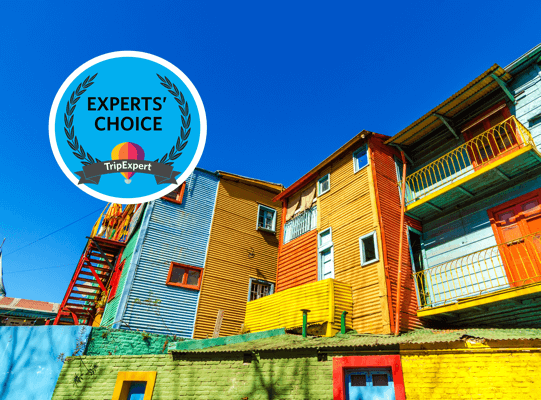
Our Experts’ Choice awards are are based on recommendations from leading travel media. Winners are determined by taking into account placement in published “best of 2018” lists, as well as the quantity and quality of reviews for hotels, restaurants and attractions. We’re pleased to announce that the winner of this year’s award for best South American destination is
Buenos Aires.
From its sultry tango halls and Belle Époque architecture to its dynamic restaurants and timeless cafes, Buenos Aires has long counted itself among the world’s greatest cities. The city promises to become an especially sought-after destination with publications like Travel + Leisure and the Robb Report listing Buenos Aires as one of the best places to travel in 2018.
Buenos Aires boasts world-class museums like the Museo Nacional, the MALBA, and the Museo Nacional de Arte Decorativo, as well as a vast collection of galleries and the multi-year Art Basel initiative reinforces the Argentine capital’s place in the international art scene.
Museum of Latin American Art of Buenos Aires
In addition to art, Buenos Aires boasts a flourishing design community. Hot independent boutiques like Animaná (a fashion store located in founder Adriana Marina’s Palermo apartment), Vacavaliente (a leather goods showroom in up-and-coming Villa Crespo), and Tamara Lisenberg’s jewelry workshop in Palermo Soho showcase the vibrance of the city’s creative sector.
The culinary landscape continues to evolve, too, as a wave of hungry young chefs infuse new flavors onto Buenos Aires menus. Among this year’s most notable restaurant openings: Proper (featuring an ever-changing menu of small plates showcasing indigenous ingredients), La Alacena (an all-day restaurant-bakery serving sourdough croissants and fresh tagliatelle), and Los Galgos (offering Negronis on tap and contemporary twists on classic Argentine dishes).
Meanwhile, local food lovers continue to swear by Tegui, an eight-year-old restaurant in the trendy Palermo neighborhood, which was recently named one of the World’s 50 Best Restaurants while La Cabrera Sur, a parrilla that serves what might be the best beef in BA is TripExpert’s highest-scoring restaurant in town.
If you’re a beverage enthusiast, you’ll also find a cluster of new craft beer bars (Buena Birra Social Club, Bierlife), speakeasies (Harrison, Victoria Brown) and coffee shops (Cafe Registrado, Lab) to satisfy your thirst.
The Palacio Duhau – Park Hyatt Buenos Aires
Buenos Aires boasts a trio of hotels with a TripExpert score of 90+: the Palacio Duhau, a Belle Époque mansion; the landmark Alvear Palace Hotel; and the massive and massively luxurious Faena Hotel.
The city also welcomed a new luxury property in 2017: the Alvear Icon Hotel, a five-star location with 159 rooms and 50 residencies in the waterside neighborhood of Puerto Madero is a sister to the Alvear Palace and the Alvear Art Hotel. Across from the Faena Arts Center, the stylish hotel features a high-end spa and fitness center and a bar with 360-degree views of the city — not to mention Glitter, South America’s first upscale kosher restaurant, which is set to open imminently.
If you’re searching for a city that blends old-world charm with a modern sensibility, look no further than Buenos Aires. Long considered the cultural capital of South America, the city continues to be one of the most exciting places to visit in the hemisphere.

Our Experts’ Choice awards are are based on recommendations from leading travel media. Winners are determined by taking into account placement in published “best of 2018” lists, as well as the quantity and quality of reviews for hotels, restaurants and attractions. Hawaii has earned this year’s Best Beach Destination designation.
Coastal Living puts the archipelago “back at the top of the A-list” for 2018 while Islands seconds the motion, saying vacationing in Hawaii is “always a good idea, but it’s an even better one now.” The critics are excited about new and renovated hotels and resorts and keen on rediscovering this classic island destination with its perfect weather and gorgeous beaches.
US News & World Report lists Oahu and Maui among the top five best places to visit in the USA, respectively, and the North Shore of Oahu is featured on National Geographic’s list of Places You Need to Visit in 2018. Kapalua Bay Beach on Maui, treasured for its “wonderfully private feel” and “clear azure waters” is one of Insider’s top picks for Best Beaches to Visit in 2018.
Whether you’re island-hopping or settling in on your favorite beach, an experience of luxury awaits. Nine Hawaii hotels have a TripExpert score of 90+ and more than 50 hotels have a score of 80+. The top 4 hotels are found on Oahu, the Big Island, Kauai, and Maui. Newcomer Four Seasons Oahu is much buzzed about and recently renovated Four Seasons Lanai is an exciting draw this year.
Waikiki, in Oahu’s Honolulu, boasts both TripExpert’s #1 hotel in Hawaii, the Halekulani Hotel. Guests of the Halekulani receive complimentary access to Experts’ Choice award-winning attractions like Iolani Palace and the Bishop Museum.
Oahu is also home to Hawaii’s #1 restaurant, Chef Mavro as well as Experts’ Choice winners La Mer and Alan Wong’s. Alohilani Resort in Honolulu is a new arrival of Fall 2017, featured on Travel + Leisure’s Hotel Openings to Watch Out for in 2017 for its dazzling centerpiece, “a fantastic Oceanarium in the lobby, which will filter water in directly from the ocean and serve as home to more than 1,000 protected marine life.”
Kauai and the Big Island offer spectacular natural wonders including Hawaii Volcanoes National Park where, if you’re lucky, you may get a glimpse of flowing lava along the ancient, jet-black lava rocks. Hapuna Beach State Recreation Area offers, an Experts’ Choice winner, offers a more rustic way to experience the natural beauty of Hawaii’s beaches with cabins overlooking the ocean.
Hapuna Beach State Recreation Area
Waimea Canyon and the Kauai’s Na Pali Coast feature breathtaking peaks and valleys full of hidden, cascading waterfalls and lush rainforest. Inaccessible by land, the only way to experience these magnificent natural sights are by helicopter tour, an activity well worth its price.
Plan your exploration of our 2018 Experts’ Choice Best Beach Destination for the best hotels, restaurants, and attractions in the Aloha State. We’ve got Hawaii covered from every angle and for every budget.
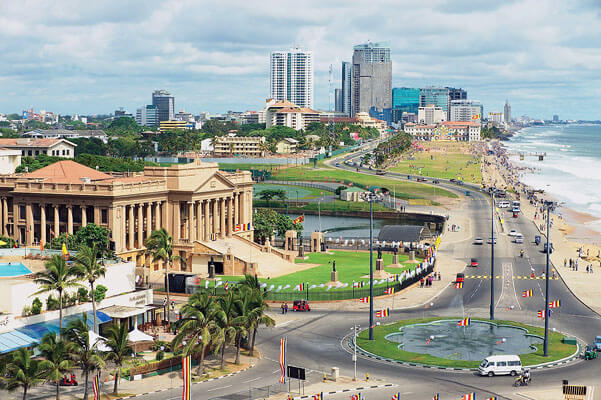
Tropical, colorful and welcoming, Colombo is a fantastic destination for anyone looking to take in Sri Lanka’s vibrant cultural heritage, explore the island’s unique and flavorful cuisine and unwind on the edge of the dramatic Indian Ocean. Sri Lanka’s capital is reminiscent of other South Asian cities but without the overwhelming crowds and pollution, offering a more relaxed, tropical alternative to Delhi or Dhaka. An incredibly diverse city, Colombo is home to many ethnicities and cultures, all of which contribute to the city’s complex and vibrant character.
Sri Lanka’s rich and diverse history spans millennia and reflects influences from a range of regional actors and global powers. A series of ancient dynasties and regional kingdoms followed in more recent history by a number of European colonial powers — Portuguese, Dutch and British — have all left their marks on modern Sri Lankan culture and consciousness.
Originally opened in 1877, this striking white building houses art and artifacts from millennia of Sri Lankan history. It’s a good place to begin to get a grasp on Sri Lanka’s rich cultural heritage. The collection of colorful antique demon masks, used in traditional Sri Lankan rituals and performances, is a personal favorite.
Adjacent to the National Museum, Colombo’s Natural History Museum is worth a visit for anyone interested in learning about the country’s endemic species.
If you’re new to Sri Lankan food, as I was, you’re in for a treat. Be prepared for some spice, and look forward to flavorful meat, seafood and vegetable curries, steamed banana-leaf packets of meat and rice (lamprais, from the Dutch for “lump” and “rice”), and a range of rice flour, wheat, coconut and lentil breads and bread-like dishes for ripping and dipping. Various fruits like mango, jackfruit, coconut, and others feature heavily in curries, sauces and condiments. If you’re familiar with South Indian food, you’ll find it similar, but definitely distinct.
If you want to dive right in to Sri Lankan cuisine, head to the buffet at Raja Bojun, where you’ll find an extensive array of local specialties — a good introduction to the range of flavors and dishes you can expect on your visit.
Housed in a colonial bungalow and former studio of famed architect Geoffrey Bawa, the café’s patios, courtyards, water features and works of art by local artists create an alluring and peaceful dining experience. The menu features a range of dishes reflecting Sri Lankan, regional and European cuisine. The Sri Lankan-style black pork curry is a favorite. Make sure to leave room for dessert.
Set in a quaint house, this local institution is part bakery, part restaurant, known for its baked goods and curries. There’s also a vegetarian lunch buffet.
Tucked away in the Cinnamon Grand Hotel, Nuga Gama — a proudly “carbon neutral” venue — is known for its traditional Sri Lankan cuisine in a setting that evokes Sri Lankan village life under a 200-year old banyan tree.
If it’s street food you’re after, Nana’s serves it up hot and delicious in a stall right on the scenic, oceanside Galle Face Green. Enjoy a bowl of kottu — chopped roti (a flatbread) with some combination of vegetables, egg and meat — while you watch the colorful kites overhead, listen to the ocean and take in gorgeous seaside sunsets.
Explore houses of worship
Sri Lanka is home to many religions including Buddhists, Muslims, Hindus and Christians, and boasts a number of striking temples and houses of worship open to visitors.
Temple of Sri Kailawasanathan Swami Devasthanam Kovil: This stunning, colorful structure — the oldest Hindu temple in Colombo — is a must-see, at the very least from the outside. If you do plan to go inside, dress modestly, and note that you’ll have to remove your shoes to enter.
Gangaramaya Temple: This beautiful Buddhist temple, over 120 years old, sits within a vibrant complex devoted to Buddhist worship and learning on the edge of scenic Beira Lake.
Jami Ul-Alfar Mosque: The striking red and white “Red Mosque” is tucked away in Colombo’s commercial district, Pettah. Completed in 1909, the building represents a mix of architectural traditions reflecting Indo-Islamic, British and Indian styles.
Known for its gemstones, wood carvings and a range of other handicrafts, Sri Lanka has plenty to offer anyone looking for a keepsake or gift. Explore Colombo’s artisan markets and boutiques for a chance to take home a variety of mementos.
Lakpahana
A commercial arm of the Sri Lanka Craftsmen and Artisans Association, Lakpahana houses handicrafts from over 500 artisans across the island. Browse jewellery, woodcarvings, masks, pottery, hand-woven products and many other items — great if you’re looking for both affordable souvenirs and higher-end items.
Kalaya
Add a touch of Sri Lanka to your home with their beautiful bedding, rugs, lamps, crockery and other housewares. Kalaya prides themselves on using natural and sustainable materials, and supporting the work of rural artisans.
Stone ’N’ String
Sri Lanka boasts an abundance of precious and semi-precious stones — which, for more than three decades, Stone ’N’ String has been crafting into gorgeous jewelry. This is a great spot to treat yourself to something beautiful or find the perfect gift for a special someone.
This laid-back city offers plenty of opportunities to relax, whether on the edge of the striking Indian Ocean, with a tropical cocktail by the pool or on the massage table.
Galle Face Green: Join a local evening ritual and sit or stroll along the Galle Face Green, stretching about a third of the mile along the edge of the Indian Ocean. Stop to watch children flying dozens of colorful kites, families playing in the ocean and dramatic sunsets.
Pool Bar, Galle Face Hotel: This picturesque poolside and oceanside bar is the perfect place to relax after a day of sightseeing.
Azmaara Spa: Unwind with a balinese massage or a coconut scrub at the award-winning Azmaara Spa in the Cinnamon Lakeside
This iconic, colonial-era hotel offers luxury accommodations overlooking the ocean. Originally a Dutch villa, the Galle Face Hotel opened in 1864 and today, combines historical charm with modern comforts. Even if you don’t stay there, it’s worth visiting.
A true hidden gem, the Bungalow, a converted 19th-century house, is an oasis of green space and rustic comforts.
Sri Lanka is small as countries go, and diverse ecological zones are within easy reach of the capital. Explore sandy beaches, hike ancient monuments, visit cities hidden in lush jungle or glimpse wildlife during a quick day-trip from Colombo. Transportation is inexpensive; even hiring a private car for the day can be very reasonable — all the more reason to get out and explore.
Pinnawala Elephant Orphanage: Meet endangered Sri Lankan elephants at this wildlife reserve where they work to protect and rehabilitate the species. At around an hour and a half away, Pinnawala is an easy train ride or car trip from Colombo.
Kandy: Visit the lush, inland city of Kandy — last capital of Sri Lanka’s ancient kings. Tucked away in mountainous jungle, the scenic two and a half hour train ride winding through the rainforest itself makes the visit worthwhile.
Sigiriya: Explore the ruins of the ancient city (a UNESCO World Heritage Site) and hike the dramatic rock fortress, the “Lion’s Rock.” The easiest way to get there from Colombo is by car, which should take around three hours.
Galle District Beaches: Head south by train or car to one of the scenic coastal towns in Galle District. Unawatuna and Hikkaduwa are known for their beaches. If you have time, visit Galle’s Old Town, a historic, colonial-era town and fortress and a UNESCO World Heritage Site around an hour and a half from Colombo.

We’re excited to announce the winners of our third annual Experts’ Choice Awards. This year, 24,000 outstanding hotels, restaurants and tourist attractions around the world have earned the award. For the first time this year, we are also announcing destination winners in several categories, including best emerging destination, best budget destination, and best overall destination.
Experts’ Choice is the only award that aggregates the advice of professional travel writers. Our 2018 award winners have been selected on the basis of over 1 million reviews from 85 publications.
The Seychelles, one of 50 TripExpert new destinations
We’ve been busy since our 2017 awards season, adding 50 new destinations on three continents, including Normandy, Cape Cod and the Seychelles. We’ve also incorporated a number of new publications, including Departures, Monocle, and The Telegraph.
It’s encouraging to see the philosophy underlying Experts’ Choice continue to be embraced by travelers and the hospitality industry alike. Meanwhile, problems with user review travel sites (which we’ve written about extensively before) were even more apparent than usual in 2017.
TripAdvisor not only managed to be gamed by a writer who made a non-existent shed the top-rated restaurant in London, but was forced to apologize for deleting reviews by a woman who was sexually assaulted by staff at a resort in Mexico. Why not turn instead to a source that brings together the trusted advice of people whose job it is to review hotels, restaurants, and attractions?
More consumers are looking for critical consensus — think Rotten Tomatoes and Metacritic — to make informed decisions and TripExpert delivers.
Help us grow our movement. If you’re an award winner, join the more than 2,000 past winners who have shared their press release or Experts’ Choice badge (read more below). If you’re a traveler, tell your friends about how much more sense it makes to go with the advice of professionals.
Our winning venues cover 124 countries and span a wide range of establishments, from luxury hotels to highly recommended hostels and from Michelin-starred restaurants to food trucks. What they have in common is expert consensus that they’re among the best in their respective categories.
Experts’ Choice is highly selective. Over 400,000 hotels, 1.5 million restaurants, and 300,000 tourist attractions were considered for the award; about 2.5% of hotels, 0.5% of restaurants and 1.5% of tourist attractions were selected.
As in previous years, hotels in Europe were the most critically acclaimed. This year, restaurants in North America performed especially well, picking up over 5,000 of the approximately 8,000 awards.
This year, for the first time, we awarded Experts’ Choice to destinations. From February through April, we announced winners in eleven categories. Follow the links to coverage of each destination below.
Experts’ Choice is awarded to hotels, restaurants, and attractions that both have a TripExpert Score of 70 or more and are in the top 10-20% of comparable venues in the same destination. The TripExpert Score is calculated based on how many of our 85 source publications have recommended the venue and what they have said about it. A number of adjustments are made, for example to account for the fact that newly opened venues may not yet have been widely covered in the press.
Our scoring system is objective and impartial; the TripExpert team makes no decisions about whether particular venues will receive the award.
If your establishment has been awarded, we will notify you via email. We’ve prepared a press release for each winner, which we encourage you to add to your website and share on social media.
You’re also eligible to display our electronic and hard copy “Experts’ Choice” badges and certificates. To get your badge, click “Venue Support” from your venue’s page on TripExpert page. Badges and certificates, including hard copy versions, are delivered to you free of charge.
If there’s anything we can help you with, please contact Chris Blume.
Just another WordPress site
